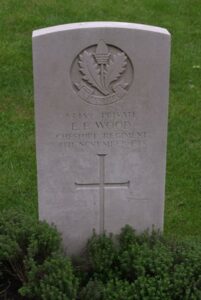The memory of the men and women of Ammanford who died in both World Wars is upheld by the pillars of the Memorial Park gates at Iscennen Road. One pillar holds the names of those that died in the Great War while the other holds the names of the men who died in the Second War, and one man who died in the Korean War. This page lists the men, along with the one woman, of Ammanford who gave their lives for freedom. There appears to be several men omitted from the war memorial for various reasons, so I have taken the liberty of including these below.
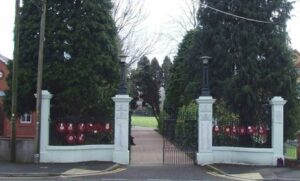
The Great War, 1914-1918
Stanley Allen, Private, 1158, Welsh Guards. Stanley was the son of David Henry Allen and Margaret Allen, of Bryn Celyn, Bettws, Ammanford, and the Husband of Mary Ann Allen, of 2, Gorseinon Terrace, Gorseinon. He enlisted at Swansea into the Welsh Guards, and was sent to France with the 1st Battalion, as part of the 3rd Guards Brigade, Guards Division. This Division has the distinction of being formed in France in August 1915. The various Guards units that had been with other Divisions were withdrawn to be brought together to create this fine formation. It remained on the Western Front throughout the war and saw its first major action during the Battle of Loos on 25 September 1915, remaining in the area during the coming months, where they also fought in the subsequent Action of Hohenzollern Redoubt, before moving to Ypres to rebuild, in preparation for a move to the Somme. Stanley was sadly wounded at Ypres, and brought to the Casualty Clearing Station at Remy Sidings, where he died of wounds on 13 May 1916. He was 25 years old, and is buried at Lijssenthoek Military Cemetery, Belgium.
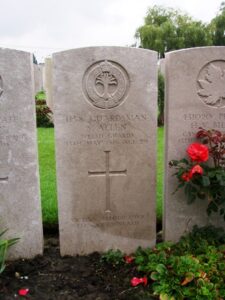
David John Ashton, Private, 41581, Worcestershire Regiment. David was the son of William and Grace Ashton, of 32, Wernolau Road, Ammanford. He enlisted into the 1/8th Battalion, Worcestershire Regiment, who were attached to 144 Brigade, 48th (South Midland) Division. The Division moved to France in March 1915, and saw its first major engagement at the opening of the Battle of the Somme, holding the line between the 56th (London) and the 31st Divisions, both of which were heavily engaged at Gommecourt and Serre respectively. Two of the battalions of the Division attacked on 1 July 1916, and suffered heavy casualties. They then went into action at the Battle of Bazentin, during the second phase of the Battle of the Somme, and captured Ovillers. They also fought at the Battle of Pozieres and the Battle of the Ancre. In March, 1917 they followed the German Retreat to the Hindenburg Line, and later in the year fought at Third Ypres, at the Battle of Langemarck, the Battle of the Polygon Wood, the Battle of Broodseinde and the Battle of Poelcapelle. The Division was ordered to Italy on 21 November 1917, where it remained for the duration of the war, taking part in actions on the Asiago Plateau, where David was killed in action on 9 August 1918. He was 24 years old, and is commemorated on the Giavera Memorial, Italy.
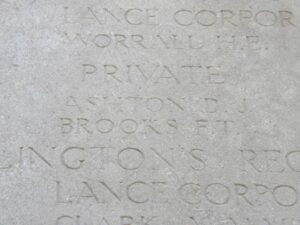
William Aubrey, Gunner, 58510, Royal Garrison Artillery. William was the son of David and Susanna Aubrey, of Wauncwmffor, Bettws. He enlisted at Pentre into the Royal Garrison Artillery, serving with their 3rd Siege Battery attached to the Third Army. The Battery were taking part in the offensive which saw the war turn in the favour of the Allies during August 1918, at the Battle of Albert, when William was killed in action on 22 August 1918, aged 38. He is buried at Warloy Baillon Communal Cemetery Extension, France.
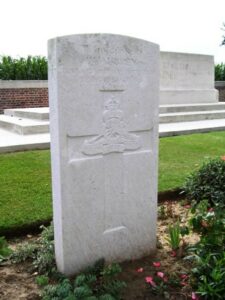
William Thomas Bailey, Private, 4231, Welsh Regiment. William was born in Marlborough in 1888, the son of William and Emma Bailey. He had probably worked as a bootmaker at Ammanford prior to the war, and enlisted at Salisbury into the 1/4th Battalion, Welsh Regiment. The Battalion was attached to 159 Brigade, 53rd (Welsh) Division, which had moved to the Mediterranean, sailing from Devonport in July 1915 arriving at Mudros by 5 August 1915. From here they moved to Gallipoli, landing on 9 August. Here they immediately faced the chaotic leadership that was to lead to the ultimate failure of the campaign, and spent the next few days in isolated pockets, fighting against a Turkish counter-attack. William was killed in action just days after landing, on 11 August 1915, aged 27. He has no known grave, and so is commemorated on the Helles Memorial, Gallipoli.
Robert William Henry Brown, Private, 8463, Essex Regiment. Robert was the son of Robert William Henry Brown, and Lucy Brown, of Barking, Essex. He was an army pensioner and had played football for Ammanford A.F.C. prior to the war, before rejoining the colours in August 1914. He was posted to the Depot Battalion, Essex Regiment at Shoreham, before being posted to their 2nd Battalion and served in France for two years. Robert married Alice Maud Hatfull, of 39, Woodlands Avenue, Chadwell Heath, Essex, while on leave on 5 May 1916. He was invalided home on 7 August 1916, after receiving several bullet wounds after getting caught up in barbed wire. He was discharged as medically unfit on 19 April 1917, and died on 15 November 1918, aged 31. Robert is buried in Barking (Rippleside) Cemetery, Essex. Robert is not commemorated locally.
James Congdon, Sergeant, 20496, Welsh Regiment. James was from Plymouth, and lived at 40, Harold Street, Tirydail, Ammanford prior to the outbreak of war. He enlisted at Ammanford into the 15th Battalion, Welsh Regiment, which was known as the Carmarthen Pals Battalion, and joined the unit at Rhyl. The battalion trained there with the 38th (Welsh) Division for several months, and James married Frances Jane Parry in 1915, just prior to the divisions move to Winchester. James was transferred into the 13th Battalion (2nd Rhondda), Welsh Regiment prior to the divisions move to France on 4 December 1916. The division was initiated into trench warfare in the Fleurbaix Sector, before marching south to the Somme in June 1916, where it was tasked with the capture of Mametz Wood. James was killed in action during the main attack on the wood on 10 July 1916. He had no known grave, and is commemorated on the Thiepval Memorial, France. His widow resided at Council Terrace, Rhyl, and sadly their son James was born on the same day that she received the notification of James’s death from the War Office. She never remarried, and died in 1938, aged 54. James is not commemorated locally.
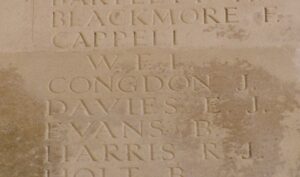
David Davies, Private, 30432, Kings Liverpool Regiment. David was born in Ammanford. He was a coalminer and lived with his sister at Park Terrace, Pantyffynon. David travelled to Lancashire to enlist into the 4th Battalion, King’s Liverpool Regiment, probably disguising his true age. The battalion was attached to 98 Brigade, 33rd Division, and moved to France during November 1915. It saw its first major action during the Battle of the Somme during the summer of 1916. David was killed in action during the Battle of Bazentin Ridge on 28 October 1916, aged 46. He has no known grave, and so is commemorated on the Thiepval Memorial, France.
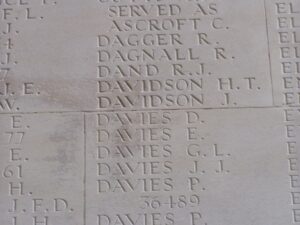
David Davies, Private, 25987, Welsh Regiment. David was born at Llanguicke, and enlisted at Ammanford into the 17th Battalion, Welsh Regiment, who were attached to 119 Brigade, 40th (Bantam) Division. This Division was formed between September and December 1915, composed of bantam units and others which had a mixture of regulation-height and shorter men. Weeding out of very under-sized or unfit men delayed the training programme, and it was not until late spring 1916 that the Division was ready to proceed on active service. The Division moved to France in June 1916, and moved to the front near Loos, where David was killed in action soon after, on 19 June 1916. He is buried at Maroc British Cemetery, Grenay.

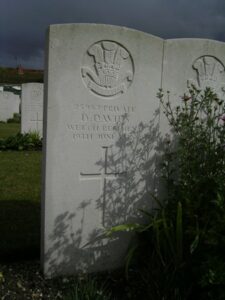
Daniel John Davies, Private, 16410, Grenadier Guards. Daniel was the son of John and Catherine Davies, of Garnant Ganol, Garnswllt, Pantyffynnon. He was a pre-war regular, who served with the 2nd Battalion, Grenadier Guards, attached to the 4th Guards Brigade, 2nd Division. One of the first Divisions to move to France, the 2nd Division remained on the Western Front throughout the war. They moved to Belgium, where they fought at the Battle of Mons, and retreating southwards, fought at the Affair of Landrecies, the Rearguard Actions of Villers-Cotterets, and at the Battle of the Marne where the German offensive was stopped. The Germans retreated north, and the BEF met them, fighting at the Battle of the Aisne. Daniel was killed in action on the Aisne on 23 September 1914. He was just 22 years old, and is buried at Vailly British Cemetery, France.
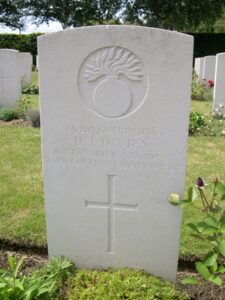
David James Davies, Private, 414804, Canadian Infantry. David was born at Ammanford on 1 January 1889, the son of David and Esther Davies, of Trwdyvale House, Penybanc. He migrated to Canada prior to the war and worked as a labourer prior to enlisting at Halifax on 30 July 1915 into the Canadian Infantry. On 18 October 1915 he sailed from Quebec for England aboard the SS Saponia and remained in England until being sent to France to join the 25th Battalion, Canadian Infantry on 7 April 1918. The battalion was attached to the 2nd Canadian Division, and was around Neuville-Vitasse, near Arras, which it was defending against the German offensive. It moved to the southern Somme sector soon afterwards and by August was stationed around Cachy. The Canadians took part in an action which was to ultimately turn the course of the war, when it attacked the German line facing Amiens, under cover of dense fog, at 4.20am on 8 August 1918 and by the end of the day had broken through the German lines and pushed forwards to some eight miles in places. The battle was such a success that Erich Ludendorff later called it: “the Black Day of the German Army”. David was killed during his battalions’ assault around Marcelcave and Guillacourt that day. He was 29 years old and is buried in Wood Cemetery, Marcelcave, France. He does not appear to be commemorated at Ammanford, as his parents later moved to live in Bridgend.
David John Davies, Driver, 2614, Royal Field Artillery. David was born in Ammanford, and enlisted there into the Royal Field Artillery. He was posted to their 56th Division Ammunition Column, attached to the 56th (London) Division. The Division fought at the diversionary attack on Gommecourt then at Ginchy, Flers and Morval, where they captured Combles. They wintered on the Somme, and followed the German retreat to the Hindenburg Line in March, 1917 before fighting in the Battle of Arras. They then moved to Ypres, where they fought at Langemarck, then at Cambrai during the Battle there in October 1917, remaining in the area for the winter. The Division were in the Arras sector when the German Spring Offensive was launched on 21 March 1918, and David was killed in action a week later, on 28 March 1918. He is buried at Anzin-St. Aubin British Cemetery, France.
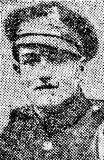
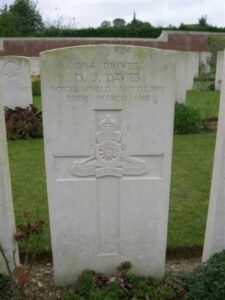
David Thomas Davies, Private, 315120, Tank Corps. David was the son of Thomas and Catherine Davies, of 60, Llandebie Road, Ammanford. He married Mary Thomas at Ammanford in the summer of 1918, just prior to being drafted to France with the Machine Gun Corps. David was transferred to the Tank Corps as soon as he landed in France, and was posted to their Training School at Mers. David took ill with influenza just after the armistice, and was sent to the base hospital at Étaples, where he died of pneumonia on 24 November 1918, aged 24. He is buried in Étaples Military Cemetery, France. David is not named on the Ammanford memorial, although the 1922 published county war memorial roll confirms him as an Ammanford man.
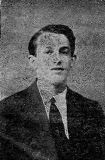
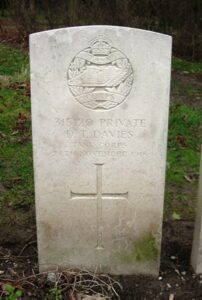
Evan George Davies, Lance Corporal, 93774, Kings Liverpool Regiment. Evan was the son of David and Alice Davies, of 33, Margaret Street, Ammanford, and enlisted at Llandeilo into the 4th Battalion, King’s Liverpool Regiment. The Battalion were attached to 98 Brigade, 33rd Division, who had moved to France during November 1915. The Division saw its first major action during the Battles of the Somme, from July 1916 onwards. They then fought at the Battle of the Scarpe and at Bullecourt, before heading to Ypres, and fighting at the Menin Road and at Polygon Wood. They were still in Flanders when the German Spring Offensive hit, and fought at the Battle of Messines, the Battle of Hazebrouck and the Battle of Bailleul, where the Division played a part in the Defence of Neuve Eglise. They then took part in the First Battle of Kemmel, and recaptured of Ridge Wood, before being sent to the St. Quentin area. Here they took part in the great offensive which was to end the war, fighting at the Battle of the St Quentin Canal, where Evan was wounded. He died of wounds on 29 September 1918 aged just 19, and is buried at Villers Hill British Cemetery, Villers-Guislain, France.
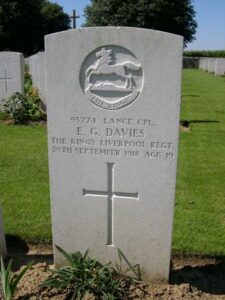
Harold Percival Davies, Second Lieutenant, Machine Gun Corps. Harold was the son of David and Sarah Davies, of 100, College Street, Ammanford. He had originally enlisted at Swansea into the 14th Battalion, Welsh Regiment, which moved to France in December 1915 attached to 114 Brigade, 38th (Welsh) Division. Harold had been commissioned in August 1915 and remained with the division until after its famous attack on Mametz Wood in July 1916. He then transferred to the Machine Gun Corps, before joining the Tank Corps, and served with their ‘D’ Battalion. Harold was killed in action during the First Battle of the Scarpe, on 11 April 1917, during the Arras Offensive. He was 24 years old, and is commemorated on the Arras Memorial, France.
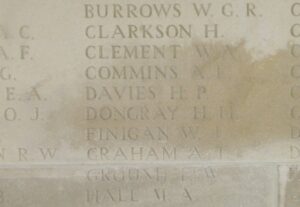
John Davies, Private, 240367, Kings Own Yorkshire Light Infantry. John was the son of David and Mary Ann Davies, of 11, Heollas, Ammanford and he enlisted at Doncaster into the 10th Battalion, King’s Own Yorkshire Light Infantry, which was attached to 64 Brigade, 21st Division. The Division crossed to France during September 1915, and its first experience of battle was disastrous, being sent into action on 26 September 1915 at Loos, whereupon it suffered over 3,800 casualties for very little gain. They moved to the Somme in 1916, and fought at the Battle of Albert, then at the Battle of Bazentin, the Battle of Flers-Courcelette and the Battle of Morval, capturing Gueudecourt before taking part in the Battle of Le Transloy. In March 1917 they followed the German Retreat to the Hindenburg Line, and in April fought at Arras, during the First Battle of the Scarpe, the Third Battle of the Scarpe, and the Flanking Operations Round Bullecourt. Later in 1917 they were moved to Ypres, and took part in the Battle of Polygon Wood, and the Battle of Broodseinde, where John was killed in action on 4 October 1917 aged 33. He has no known grave, and so is commemorated on the Tyne Cot Memorial, Belgium.

John Davies, Private, 19109, Somerset Light Infantry. John was born in Betws, and was the Husband of Emily Davies, of Bryngrenig, Glanamman. He enlisted at Ammanford into the 8th Battalion, Somerset Light Infantry, attached to 63 Brigade, 21st Division. The Division crossed to France in September, 1915, and its first experience of battle was disastrous, being thrown into action at Loos on 26 September, whereupon it suffered over 3,800 casualties for very little gain. They moved to the Somme in 1916, and fought at the Battle of Albert, where John was sadly killed in action during the opening assault, on 1 July 1916, aged 32. He is buried at Gordon Dump Cemetery, Ovillers La Boisselle.
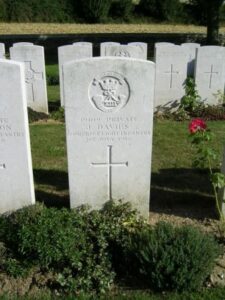
Sidney George Davies, Second Lieutenant, Royal Welsh Fusiliers. Sidney was born in Ammanford, the son of George and Mary Davies, and was the Husband of Daisy Evelyn Davies (nee Charnley), of “Ellesmere,” Pine Grove, Rhos-on-Sea. Prior to the war, Sidney was an English Congregational Minister, at Stony Stratford and Whaddon, Bucks, but accepted a Commission into the Royal Welsh Fusiliers. He was posted to their 9th Battalion, attached to 58 Brigade, 19th (Western) Division. The Division assembled around Bulford during September 1914. Divisional training was completed near Tidworth, from March 1915, and the Butterfly Division crossed to France during July 1915, and moved to positions near Loos. The Division fought during the opening attack of the Battle of Loos, and then moved to the Somme, where they took part in the second wave of the attack on Ovillers-La Boiselle on 1 July 1916, capturing the village at heavy cost, and fought through the Somme Battles of Pozieres and the Ancre in 1916. They then moved North to Ypres, taking part in the Battle of Messines. Sidney was killed in action during the launching of Third Ypres on 31 July 1917. He was 31 years old, and is commemorated on the Ypres (Menin Gate) Memorial, Belgium.
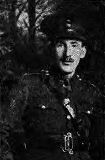
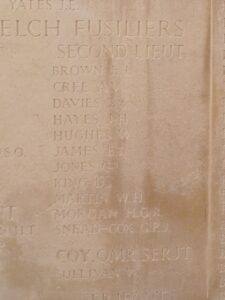
Thomas Haydn Davies, MM, Private, 20732, Welsh Regiment. Thomas was the son of Thomas and Elizabeth Davies, of 6, Quarry Row, Pantyffynon. He enlisted at Pontardulais into the 15th Battalion, Welsh Regiment, the ‘Carmarthen Pals’. The Battalion was part of 114 Brigade, 38th (Welsh) Division, which had landed in France during December 1915 and had spent their first winter in the trenches near Armentieres. In June they marched south to the Somme, where they were tasked with the capture of Mametz Wood. The attack on the wood began on 7 July, but met with fierce resistance, and it took until 14 July to finally clear the wood. The Division suffered terrible casualties at Mametz, and were taken out of the line, and moved to Ypres to rebuild. Thomas was killed in action at Ypres on 30 January 1917. He is buried at Bard Cottage Cemetery, Belgium. Thomas had been awarded the Military Medal for bravery during his twelve months on the front, probably for action at Mametz Wood.

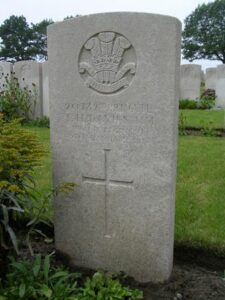
Thomas Rosser Davies, Private, 424728, Canadian Infantry. Thomas was born on 9 August 1890 at Ammanford, the son of Thomas and Margaret Davies, of Penybank. He had married prior to the war, being the husband of Annie Davies, of Brynhyfryd, Penybank, and he had also served for a year with the 4th Welsh, prior to emigrating to Canada. He enlisted in Canada on 17 September 1915 into the Canadian Expeditionary Force, and joined the 1st Canadian Mounted Rifles (Saskatchewan), who were attached to 8 Brigade, 3rd Canadian Division. The Division had formed in France during December 1915 and moved to positions near Ypres. Here they fought at the Battle of Mount Sorrel in June 1916, before being moved to the Somme, where they took part in the Battle of Flers-Courcelette, the Battle of Thiepval and the Battle of Le Transloy. Thomas was wounded at Le Transloy, and died of wounds on 19 October 1916 aged 25. He is buried at Contay British Cemetery, Contay.
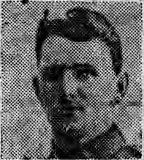
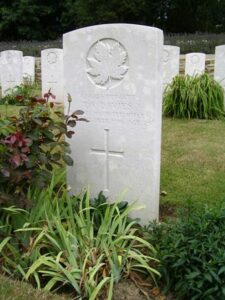
William James Davies, Lance Corporal, 48124, Kings Liverpool Regiment. William was the son of Samuel and Mary Davies, of Angel Cottage, Llandebie. He enlisted at Ammanford into the King’s Liverpool Regiment, but later transferred into first the Welsh Regiment, and then the 81st Company, Labour Corps. This was probably due to his health not being able to withstand the rigours of trench warfare. Not much is known about William’s part in the war, but he died in France on 27 July 1918 aged 38, and is buried at Bagneux British Cemetery, Gézaincourt.
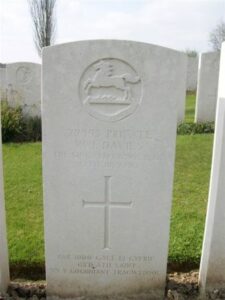
Hubert Gilmore Dewsberry, Lance Corporal, 200356, Welsh Regiment. Hubert was the son of Robert and Lizzie Dewsberry, of Hendre, Box, Llanelli. He resided in Ammanford prior to the war, and enlisted at Llandeilo into the 1/5th Battalion, Welsh Regiment, attached to 159 Brigade, 53rd (Welsh) Division. The Division moved to the Mediterranean, sailing from Devonport in July 1915 arriving at Mudros by 5 August 1915. From here they moved to Gallipoli, landing on 9 August, and were immediately thrown into action, and spent the next few days in isolated pockets fighting against a Turkish counter-attack. The Division remained here throughout the coming months, and suffered severe losses in manpower strength during the great November 1915 blizzard on Gallipoli, when its total strength was reduced to less than that of a full-strength Brigade. On 11 December 1915 the Division was evacuated to Mudros, and by 23 December 1915 were moved to Egypt. They remained on the Suez Canal Defences for the next twelve months, and in early 1917 moved into Palestine, where they remained for the duration of the war, fighting at the Battles of Gaza, and successfully capturing Jerusalem. Hubert was wounded during the Second Battle of Gaza, and died of wounds on 28 April 1917 aged just 19. He is buried at Deir El Belah War Cemetery, Egypt. He is also commemorated on his parent’s gravestone at Box, Llanelli.
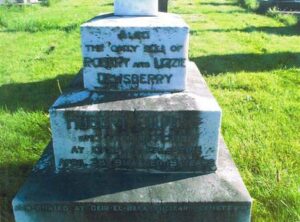
William Alfred Edwards, Gunner, 161082, Royal Garrison Artillery. William was the son of John and Rachel Edwards, of 46, Wind Street, Ammanford, and the Husband of Mary Ann Edwards, of Ynysdawelog, Pantyffynon. He enlisted at Llandeilo into the Royal Garrison Artillery, and served with their 170th Siege Battery. The Battery was at Ypres during the Battles of Third Ypres, and William was killed in action there on 9 November 1917, during the Second Battle of Passchendaele. He was 25 years old, and is buried at Ypres Reservoir Cemetery, Belgium.
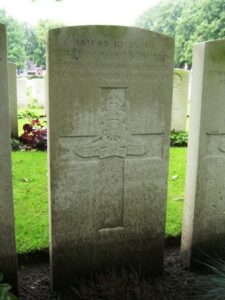
Ernest Edgar Edwins, Private, 52449, Kings Liverpool Regiment. Ernest resided at Ammanford prior to the war, and was the Husband of Annie Ellen Edwins. He enlisted there into the South Lancashire Regiment, but later transferred into the 18th Battalion, King’s Liverpool Regiment, attached to 89 Brigade, 30th Division. The Division moved to France in November 1915, and took part in its first major action during the Somme Offensive, at the Battle of Albert, where they captured Montauban. They then fought during the latter stages of the offensive, during the Battle of Le Transloy, before wintering on the Somme. In March 1917 the Division followed the German Retreat to the Hindenburg Line. Ernest was killed in action about this time, on 9 April 1917. He was 28 years old, and is buried at Wancourt British Cemetery, France. Ernest is not commemorated locally.
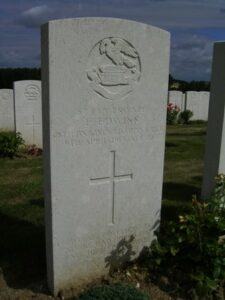
George Embrey, Private, 39800, Welsh Regiment. George was the son of William and Ann Embrey, of Peterchurch, Hereford. He lived at Caerbryn, Llandebie Road, Ammanford, prior to the war and enlisted there into the Welsh Regiment. Early in 1916 George was posted to the 9th Battalion, Welsh Regiment, which was in France attached to 58 Brigade, 19th (Western) Division. He probably joined up with the 9th Welsh in the Loos sector, prior to its move south to the Somme, where the 19th Division took part in the opening assault on the village of La Boiselle on 1 July 1916. The 9th Welsh saw heavy fighting over the coming days, before having a rest prior to a new attack on Contalmaison on 7 July 1916. George was killed in action during this attack. He was 25 years old, and is commemorated on the Thiepval Memorial, France. George is not commemorated locally.
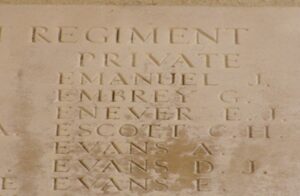
Arthur Richard Evans, Private, 29799, Gloucestershire Regiment. Arthur was born at Felinwen on 12 August 1885, the son of Benjamin Robert Evans and Mary Evans (née Davies). He worked at Llanwonno prior to the war, and married Millicent Mary Morton in 1910. He enlisted at Cardiff into the 8th (Service) Battalion, Gloucester Regiment, which was attached to 57 Brigade, 19th (Western) Division. The Division crossed to France during July 1915, and moved to positions near Loos, where it took part in the opening attack of the Battle of Loos on 25 September 1915. The following year the Division moved to the Somme, where it took part in the second wave of the attack on Ovillers-La Boiselle on 1 July, capturing the village at heavy cost. It then fought through the Somme Battles of Pozières and the Ancre in 1916. In 1917 the Division moved to Ploegsteert, taking part in the Battle of Messines. It then moved further north to positions around Ypres. Arthur was killed here on 3 September 1917. He was buried at Railway Dugouts Burial Ground, Belgium, but his original grave was destroyed by shellfire, so today he is commemorated on a Special Memorial within the cemetery. Arthur does not appear to be commemorated locally, although his brother David John Evans, who died in 1920, is.
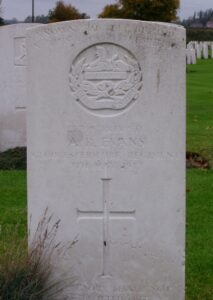
David Idris Evans, Bombardier, 9994, Royal Field Artillery. David was the son of David and Hannah Evans, of 60A, Wind Street, Ammanford. He enlisted there into the Royal Field Artillery, and served with their ‘D’ Battery, 56th Brigade, attached to the 52nd (Lowland) Division. Initially assigned to the defence of the Scottish coast, the Division moved to Gallipoli (less two of its artillery Brigades) arriving there by early July 1915. While moving from Scotland, the Division lost 210 officers and men killed, and another 224 injured, in a train crash near Gretna that involved the 1/7th Battalion, the Royal Scots. After being evacuated from Gallipoli early in 1916, by April 1916, the Division had moved to Egypt, where it again saw action. It moved into Palestine early in 1917, and took part in the Palestinian Offensive, fighting at the Battles of Gaza, and taking part in the capture of Jerusalem. David was taken ill in Palestine, and evacuated to Hospital in India. He died of sickness in India on 26 December 1917 aged 25, and as he has no known grave, is commemorated on the Kirkee 1914-1918 Memorial, India.
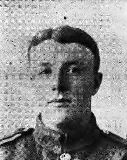
David John Evans, Private, 114325, Royal Army Medical Corps. David was the son of Benjamin Robert and Mary Evans (née Davies), of Capel Isaac, Llandeilo. He worked at Llanwonno prior to the war and married Beatrice Mary Smith in 1909. The couple lived in 91, Alfred Street, Roath Park, Cardiff. He enlisted at Cardiff into the Royal Army Medical Corps, and served with their 10th Ambulance Train. David sadly died after the war had ended, on 31 August 1920 aged 39, and is buried at Cardiff (Cathays) Cemetery. His brother Arthur Richard Evans was killed at Ypres in 1917.
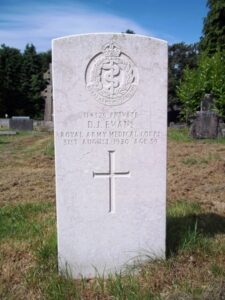
Evan Evans, Private, 29510, Royal Welsh Fusiliers. Evan was born at Merthyr in 1896, the son of John and Hannah Evans. By 1901 the family had moved to 4, Rice Street, Bettws, and Evan enlisted at Ammanford in 1915 into the Royal Welsh Fusiliers. Early in 1916 he was posted to France, joining the 1st Battalion, Royal Welsh Fusiliers, which was on the Somme attached to 22 Brigade, 7th Division. The battalion contained two officers who would later become famous war poets, Siegfried Sassoon and Robert Graves, and as a result their part in the Somme battles is well documented. It played an important part in the capture of Fricourt on 1 July 1916, and later that month suffered heavy casualties at High Wood. It remained on the Somme throughout the offensive, and by December was in the line near Beaumont Hamel. Evan was wounded here, and died on 4 December 1916, aged 20. He was originally buried in Green Dump Cemetery, but due to the cemetery being destroyed by further fighting, is today commemorated on a special memorial within Ancre British Cemetery, Beaumont-Hamel, France.

Frederick Ernest Evans, Private, 1420, Welsh Regiment. Frederick was born at Leamington Spa, and enlisted at Ammanford into the 2nd Battalion, Welsh Regiment, which was attached to 3 Brigade, 1st Division. The Division had been one of the first to arrive in France, fighting at the Battle of Mons, and taking part in the retreat to the Marne, where the Germans were stopped. They then fought at the Aisne, and at Chivy, before being moved North to Ypres. Here they fought at the First Battle of Ypres, where they again stopped the German Offensive, before wintering in Flanders. The following year saw them in action again at the Battle of Aubers, before moving South to Loos, where they fought during the Battle of Loos, and the action at the Hohenzollern redoubt. Frederick was accidentally killed on 3 July 1916, and is buried at Bully-Grenay Communal Cemetery, British Extension, France.
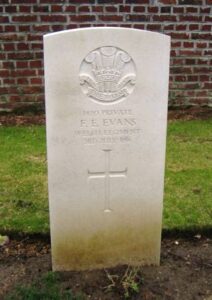
Garfield Evans, Private, 12242, Royal Welsh Fusiliers. Garfield was born in Ammanford, and was the son of Mr. and Mrs. Tom Evans of Field Street. He worked at Park Colliery prior to the war, and enlisted at Cardiff into the 8th Battalion, Royal Welsh Fusiliers, who were attached to 40 Brigade, 13th (Western) Division. On the 13th June, 1915 the first transports carrying the Division left port, and moved to Alexandria. By the 4th July, all units had moved to Mudros, preparatory for landing on Gallipoli. During July 1915 the Divisional infantry landed on Cape Helles and relieved the 29th Division. They left and returned to Mudros at the end of the month, and the entire Division landed at ANZAC Cove between 3 and 5 August 1915, taking part in the Battles of Sari Bair, Russell’s Top, and Hill 60, ANZAC. Garfield was wounded at Gallipoli when a shrapnel ball struck him at the back of the neck and went through his throat, lodging near his cheekbone under the left eye. He was evacuated to Egypt where he died of his wounds on 17 September 1915. He is buried at Alexandria (Chatby) Military and War Memorial Cemetery, Egypt.
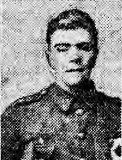
Thomas Silas Evans, Gunner, 173884, Royal Garrison Artillery. Thomas was the son of David and Mary Evans, of 90, Wind Street, Ammanford. He enlisted there into the Royal Garrison Artillery, and served with their 111th Heavy Battery, which was part of the 6th Brigade, RGA, attached to the 2nd Army. The 2nd Army had fought on the Somme, and were at Ypres in 1917, taking part in the battles of Third Ypres, when Thomas was killed in action during the First Battle of Passchendaele, on 21 October 1917. Thomas was 24 years old, and is buried at Birr Cross Roads Cemetery, Belgium.
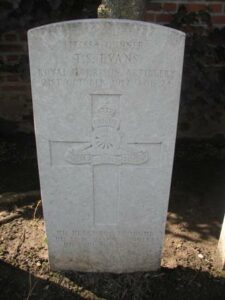
William Coslett Evans, Private, 13217, Royal Welsh Fusiliers. William was the son of Thomas and Hannah Evans, of 2, Betws Road, Ammanford. He enlisted there into the 17th Battalion, Royal Welsh Fusiliers, who were attached to 115 Brigade, 38th (Welsh) Division. The Division had landed in France during December 1915 and had spent their first winter in the trenches near Armentieres. In June they marched south to the Somme, where they famously capture Mametz Wood in July 1916. The Division suffered terrible casualties at Mametz, and were taken out of the line, and moved to Ypres to rebuild. Here they fought at the Battle of Pilckem, where William was killed in action on 31 July 1917 aged 34. He has no known grave, and so is commemorated on the Ypres (Menin Gate) Memorial, Belgium.
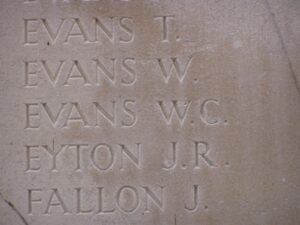
William Herbert Evans, Gunner, 259444, Royal Field Artillery. William was the son of Jonah and Mary Ann Evans, of 7, Penybank Road, Ammanford. He enlisted at Carmarthen into the Royal Field Artillery, and served with their ‘A’ Battery, 86th Brigade, attached to the 19th (Western) Division. The Division crossed to France during July 1915, and moved to positions near Loos. The Division fought during the opening attack of the Battle of Loos, and then moved to the Somme, where they took part in the second wave of the attack on Ovillers-La Boiselle on 1 July 1916, capturing the village at heavy cost, and fought through the Somme Battles of Pozieres and the Ancre in 1916. They then moved North to Ypres, taking part in the Battle of Messines, and fought on the Menin Road and at Polygon Wood, before moving up to Broodseinde, Poelcapelle and Passchendaele Village itself. In 1918 they were caught up in the German Spring Offensive near St. Quentin, where they suffered terrible casualties, and fought at the Battle of Bapaume. They moved to Ypres, but were caught up in the German attack at Messines, and at Bailleul, and Kemmel, before being moved south to rest. William was killed in action during the interim period of their move south, on 29 September 1918. He was just 19 years old, and is buried at Peronne Communal Cemetery Extension, France.
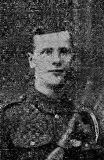
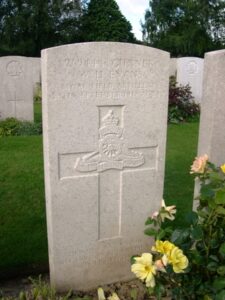
John William Farrell, Bombardier, W/5188, Royal Field Artillery. John was the son of John William and Eleanor Elizabeth Farrell, of Chelsea, London. He was a Police Constable at Ammanford prior to the war, and enlisted there into the Royal Field Artillery, serving with their ‘D’ Battery, 2nd Brigade. John was wounded at Ypres, during the Battle of Messines, and was evacuated to the Casualty Clearing Station at Proven, where he died of wounds on 10 June 1917, aged 25. He is buried at Mendinghem Military Cemetery, Belgium.
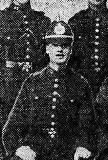
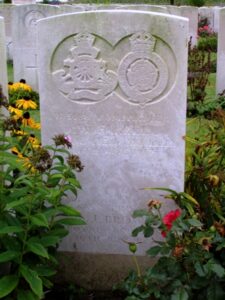
Charles Isgar Fletcher, Sapper, 388072, Royal Monmouth Royal Engineers. Charles was the son of Thomas and Eliza Fletcher, of 27, College Street, Ammanford. He had married, and lived with his wife prior to the war at Monmouth, and enlisted there into the Royal Engineers. He served with the No.5 Siege Company, Royal Monmouth Royal Engineers. Charles had served for two years in Egypt before returning to the Western Front, where he was taken ill with pneumonia during the Advance on the Hindenburg Line in 1918, and died on 30 October 1918 aged 25. He is buried at Terlincthun British Cemetery, Wimille. His sister, Emma, also died as a result of the war.
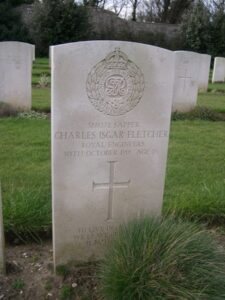
Emma Grace Fletcher, Nurse, Red Cross. Emma was the daughter of Thomas and Eliza Fletcher, of 27 College Street, Ammanford, and the sister of Charles Isgar (above). Emma worked as a Nurse at the Royal Military Hospital, Pontypool, and returned home briefly after her brother’s death in France to help console her bereaved parents. She returned to Pontypool, but sadly contracted influenza, and died on 19 November 1918. Emma was 28 years old, and was brought home for burial at St. Michael’s Burial Ground, Ammanford on 23 November 1918.
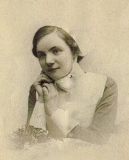
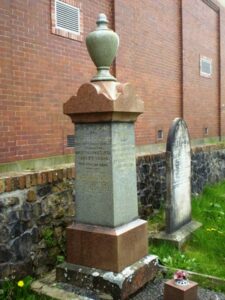
Ebenezer Francis, Private, 54117, Welsh Regiment. Ebenezer was the son of David and Gwenny Francis, of 11, Wind Street, Ammanford. He married Jane Thomas at Ammanford late in 1914, before enlisting at Swansea into the 9th Battalion, Welsh Regiment. The Battalion was part of 58 Brigade, 19th (Western) Division, and crossed to France during July 1915, seeing its first action during the Battle of Loos. They then moved to the Somme, where they took part in the second wave of the attack on Ovillers-La Boiselle, capturing the village at heavy cost, and fought through the Somme Battles of 1916. They then moved North to Ypres, taking part in the Battle of Messines, and fought on the Menin Road and at Polygon Wood, before moving up to Passchendaele Village itself. In 1918 they were caught up in the German Spring Offensive near St. Quentin, where they suffered terrible casualties. They moved to Ypres, but were caught up in the German attack at Messines, and at Kemmel where Ebenezer was Killed in Action on 24 March 1918, aged 32. He is commemorated on the Arras Memorial, France.
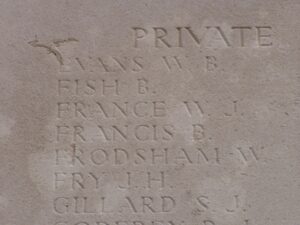
John Francis, Private, S/17876, Cameron Highlanders. John was the son of William and Rachel Francis, of Cwmrhydyreirin, Betws, Ammanford. He enlisted at Cardiff on 19 April 1915 into the Cameron Highlanders. John was sent to Inverness to train, before landing in France in June 1915, joining the 1st Battalion, Cameron Highlanders, who were attached to 1 Brigade, 1st Division. The Division had been one of the first to arrive in France, fighting at the Battle of Mons, and taking part in the retreat to the Marne, where the Germans were stopped. John joined the battalion at Ypres. Here they fought at the First Battle of Ypres, where they again stopped the German Offensive, before wintering in Flanders. The following year saw them in action again at the Battle of Aubers, before moving South to Loos, where they fought during the Battle of Loos. John was killed in action here on 13 October 1915 aged just 22. He has no known grave, and so is commemorated on the Loos Memorial, France.
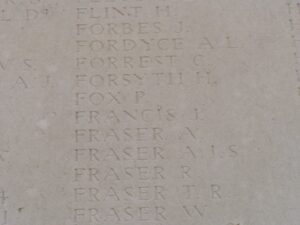
George Robert Charles Gowing, Private, 19501, Welsh Regiment. George was born in Ipswich. He was raised at Mellor’s Orphanage School, Bristol, and had a sister living in Ashley Down, Bristol. He had moved to Ammanford prior to the war, and worked for John Thomas, of Amman Stores, in High Street. George enlisted at Llanelli into the 9th Battalion, Welsh Regiment. He then transferred to the 2nd Welsh, who were attached to 3 Brigade, 1st Division. The Division had been one of the first to arrive in France, fighting at the Battle of Mons, and taking part in the retreat to the Marne, where the Germans were stopped. They then fought at the Aisne, and at Chivy, before being moved north to Ypres. Here they fought at the First Battle of Ypres, where they again stopped the German Offensive, before wintering in Flanders. The following year saw them in action again at the Battle of Aubers, before moving South to Loos, where they fought during the Battle of Loos. George was killed in action here on 26 September 1915, aged 20. He has no known grave, and so is commemorated on the Loos Memorial, France.
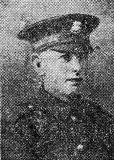
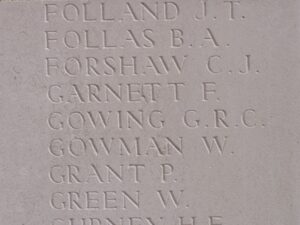
Levi Pugh Griffiths, Private, 34025, Royal Army Medical Corps. Levi was the son of Thomas and Eleanor Griffiths, of Tynllethan, Cwmtwrch, Caio, Llandovery. He worked at Ammanford prior to the war, and enlisted there into the Royal Army Medical Corps. He served with the 32nd Field Ambulance, attached to the 10th (Irish) Division. On the 27th June the Division received orders to prepare for service on Gallipoli, and embarked at Liverpool on the 9th July. By the end of the month most units had assembled on Lemnos and between 6 and 7 August 1915 landed on Gallipoli at Suvla Bay, less the 29th Brigade, which went to ANZAC Cove, Gallipoli. Levi was killed in action here during the Attack from Suvla on 17 August 1915, aged 26. He has no known grave, and so is commemorated on the Helles Memorial, Gallipoli.
William John Griffiths, Private, 4054, Welsh Regiment. William was born at Talybont, Glamorgan, the son of William and Harriet Griffiths. The family later resided Capel Hendre and later at 24, Harold Street, Ammanford. He enlisted at Ammanford into the 1/4th Battalion, Welsh Regiment. William sadly died in Pembrokeshire before his Battalion sailed for the Mediterranean, on 9 February 1915. He was only 19 years old, and is buried at Cwmgerdennin (Gerizim) Welsh Baptist Chapelyard.
Herbert Halford, Lance Corporal, 3211, South Lancashire Regiment. Herbert was born in Naseby, the son of James and Lucy Halford, and he was the Husband of Fanny Halford, of 11, Eckersley Street, Leigh, Lancs. He resided in Ammanford with his family prior to the war, and enlisted at Leigh into the 2nd Battalion, South Lancashire Regiment. The Battalion was attached to 75 Brigade, 25th Division, which landed in France on 26 September 1915. They were posted to the Vimy area, where they defended Vimy Ridge against a German attack in May 1916, then moved to the Warloy area and attacked on 3 July 1916 near Thiepval during the Somme Offensive. Herbert was killed two weeks later, on 15 July 1916. He was 38 years old, and is buried at Ovillers Military Cemetery, France.
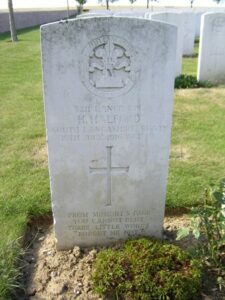
Frank Harvey, Gunner, 14464, Royal Field Artillery. Frank was the son of John and Elizabeth Jane Harvey, of Brynamlwg, New Road, Ammanford. He enlisted at Ammanford into the Royal Field Artillery, and served in ‘B’ Battery, 50th Brigade, attached to the 9th (Scottish) Division. During the summer of 1915 the Division moved to France, and saw its first major action during the Battle of Loos. They then took part in the Battle of the Somme, fighting at the opening Battle of Albert, and then at the Battle of Bazentin, where they captured Longueval. They then fought at the Battle of Delville Wood, and the Battle of Le Transloy, and in April, 1917 were at Arras, where they fought at the First Battle of the Scarpe and the Third Battle of the Scarpe. The Division moved north to Ypres, and fought at the Battle of the Menin Road, and at the First Battle of Passchendaele, before being moved to Cambrai, and fighting at the Action of Welsh Ridge. In March, 1918 they were still in the Cambrai area, and were one of the Divisions hit there by the German Spring Offensive, fighting at the Battle of St Quentin, which is where Frank was wounded. He was evacuated to the Base Hospital at Boulogne, where he died of wounds on 30 April 1918. He was 24 years old, and is buried at Boulogne Eastern Cemetery, France.
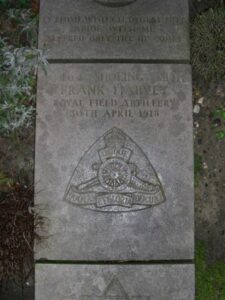
William Hewlett, Private, 7744, Welsh Regiment. William was born at Islington, and was the Husband of Sarah Jane Hewlett, of 44, Pantyffynon Road, Pantyffynon. He enlisted at Llandebie into the 2nd Battalion, Welsh Regiment, attached to 3 Brigade, 1st Division. The Division had been one of the first to arrive in France, fighting at the Battle of Mons, and taking part in the retreat to the Marne, where the Germans were stopped. They then fought at the Aisne, and at Chivy, before being moved north to Ypres. Here they fought at the First Battle of Ypres, where they again stopped the German Offensive, but William was one of many Welshmen to be killed in action here during the Battle of Gheluvelt, on 31 October 1914, aged 31. He was buried at Kolenberg Forest German Cemetery, but his grave was lost in subsequent fighting over the area during the next four terrible years, and so he is now commemorated by a Special Memorial sited at Harlebeke New British Cemetery, Belgium.
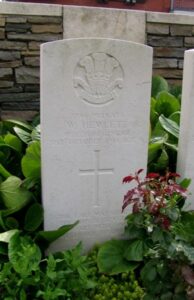
William Charles Hext, Private, 26768, Training Reserve. William was born at Stocklanch, Somerset, the son of Philip Hext. Prior to the war the family had moved to Oak Cottage, Glynmoch, Ammanford, and William began work as a collier. He enlisted at Cardiff on 19 February 1917 into the Training Reserve, serving in the 63rd Battalion, stationed at Bodelwyddan, North Wales. William sadly died at Kinmel Park Hospital on 15 March 1917 aged only 16, and is buried there at Bodelwyddan (St. Margaret) Churchyard. William is not commemorated locally.
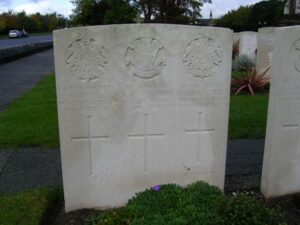
William Higgs, Acting Sergeant, 200898, Welsh Regiment. William was born at Betws, the son of Jonathan and Elizabeth Higgs. He enlisted at Ammanford into the 1/4th Battalion, Welsh Regiment. The Battalion was attached to 159 Brigade, 53rd (Welsh) Division, which moved to the Mediterranean, sailing from Devonport in July 1915. They arrived at Mudros by 5 August 1915, and landed at Gallipoli on 9 August. Here they were immediately plunged into action, and spent the next few days in isolated pockets fighting against a Turkish counter-attack. The Division remained here throughout the coming months, and suffered severe losses in manpower strength during the great November 1915 blizzard on Gallipoli, when its total strength was reduced to less than that of a full-strength Brigade. On 11 December 1915 the Division was evacuated to Mudros, and by 23 December 1915 were moved to Egypt. They remained on the Suez Canal Defences for the next twelve months, and in early 1917 moved into Palestine, where they remained for the duration of the war, fighting at the Battles of Gaza, and successfully capturing Jerusalem. William was killed in action during the First Battle of Gaza, on 26 March 1917, aged 21, and is buried at Gaza War Cemetery.
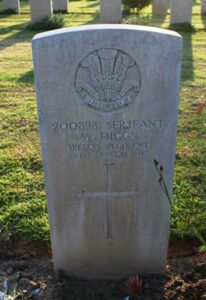
William Hines, Private, 12837, South Wales Borderers. William was the son of George Hines, and was born in Hackney. He enlisted at Brecon into the 4th Battalion, South Wales Borderers, which were attached to 40 Brigade, 13th (Western) Division. On 13 June 1915 the first transports carrying the Division left port, and moved to Alexandria. By 4 July all units had moved to Mudros, preparatory for landing on Gallipoli. Between 6 and 16 July 1915 the Divisional infantry landed on Cape Helles and relieved the 29th Division. They left and returned to Mudros at the end of the month, and the entire Division landed at ANZAC Cove between 3 and 5 August 1915, taking part in the Battle of Sari Bair, which is where William was killed in action on 9 August 1915, aged 34. He is buried at Hill 60 Cemetery, Gallipoli. William is listed on the Carmarthen County Roll of Honour, but is not on the Ammanford Memorial Gates.
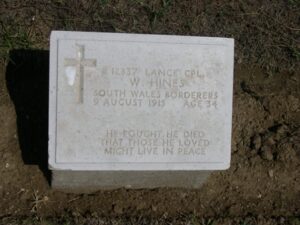
Sydney Hopkins, Gunner, 2620, Royal Field Artillery. Sydney was the son of Griffith and Hannah Hopkins, of 44, Wind Street, Ammanford. He enlisted there into the Royal Field Artillery, and served with ‘B’ Battery, 56th Brigade, attached to the 52nd (Lowland) Division. Initially assigned to the defence of the Scottish coast, the Division moved to Gallipoli (less two of its artillery Brigades) arriving there by early July 1915. While moving from Scotland, the Division lost 210 officers and men killed, and another 224 injured, in a train crash near Gretna that involved the 1/7th Battalion, the Royal Scots. After being evacuated from Gallipoli early in 1916, by April 1916, the Division had moved to Egypt, where it again saw action. It moved into Palestine early in 1917, and took part in the Palestinian Offensive, fighting at the Battles of Gaza, and taking part in the capture of Jerusalem. The Division received orders in March 1918 to proceed to the hard-pressed Western Front, and were near Arras when Sydney was killed in action on the 23 May, 1918. He was 27 years old, and is buried at Ecoivres Military Cemetery, Mont-St-Eloi.
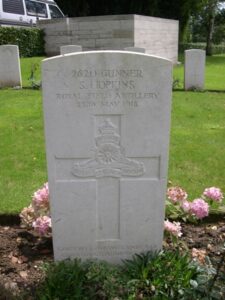
William John Hughes, Private, 26467, Welsh Regiment. William was born in Llanarthney, the son of John Hughes, later of Gorsfach, Gorslas. William resided at Llandebie prior to the war, and enlisted at Porth into the 17th Battalion, Welsh Regiment. The Battalion was attached to 119 Brigade, 40th (Bantam) Division, which was formed between September and December 1915, composed of bantam units and others which had a mixture of regulation-height and shorter men. Weeding out of very under-sized or unfit men delayed the training programme, and it was not until late spring 1916 that the Division was ready to proceed on active service. The Division moved to France in June 1916, and moved to the front near Loos. Late in 1916 they moved south to the Somme, and fought at the Battle of the Ancre, and remained in the area over the winter. In March 1917 the Germans withdrew to their shortened line, called the Hindenburg Line, and the 40th Division were one of the Divisions that followed the withdrawal. William was killed in action during this period, on 24 April 1917. He is buried at Fifteen Ravine British Cemetery, Villers-Plouich.
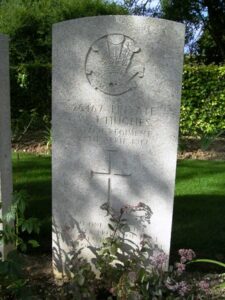
Albert John Hunt, Private, 31232, Machine Gun Corps. Albert was the son of Richard and Jane Hunt, of 32, Park Terrace, Pantyffynnon. He enlisted at Ammanford into the South Wales Borderers. He later transferred to the 70th Company, Machine Gun Corps, attached to the 23rd Division, which had been in France since December 1915, and they saw their first major action at the Battle of Albert, where they captured Contalmaison, and then fought at the Battle of Bazentin, the Battle of Pozieres, the Battle of Flers-Courcelette, the Battle of Morval and the Battle of Le Transloy, where they captured Le Sars. In May, 1917 they took part in the Battle of Messines, which is where Albert was killed in action on 7 June 1917, aged 20. He has no known grave, and so is commemorated on the Ypres (Menin Gate) Memorial, Belgium.
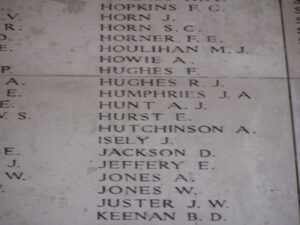
William Barker I’Anson, Corporal, 18850, Royal Fusiliers. William was the son of Albert and Eliza Jane I’Anson, of Offley near Hitchen, and he worked for the Great Western Railway at Ammanford. He served with the 9th Battalion, Royal Fusiliers, who were attached to 36 Brigade, 12th (Eastern) Division. The Division landed at Boulogne on 31 May 1915, and took over the line at Ploegsteert Wood. They then moved south and fought in the Battle of Loos, and the subsequent actions of the Hohenzollern Redoubt, and remained there until March 1916. By June they were in position at the Somme, and attacked Ovillers on 2 July 1916. They fought at Pozieres and Le Transloy, which is where William was killed in action on 7 October 1916, aged 23. He has no known grave, and so is commemorated on the Thiepval Memorial, France. He is commemorated on the GWR Memorial at Chester, and is listed under the Ammanford Traffic Department. William is named on the County Roll of Honour, but not on the Ammanford Memorial.
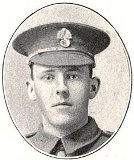
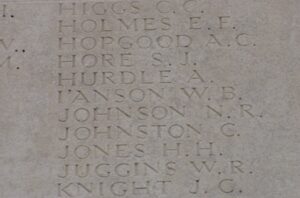
Edgar Lewis James, Driver, W/1341, Royal Field Artillery. Edgar was born in Aberaeron, and had resided at Aeron Cottage, Llwynhendy, Llanelly. He worked for the Great Western Railway, at Ammanford, and enlisted there into the Royal Field Artillery, serving with ‘B’ Battery, 119th Brigade, attached to the 38th (Welsh) Division. The Division had landed in France during December 1915 and had spent their first winter in the trenches near Armentieres. In June they marched south to the Somme, where they famously captured Mametz Wood in July 1916. The Division suffered terrible casualties at Mametz, and were taken out of the line, and moved to Ypres to rebuild. Edgar was killed in action here on 28 May 1917. He was just 22 years old, and is buried at Dickebusch New Military Cemetery Extension, Belgium. He is commemorated on the GWR Memorial at Chester, and is listed under the Ammanford Traffic Department. Edgar is not commemorated on the Ammanford Memorial.
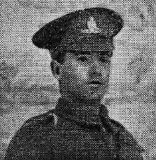
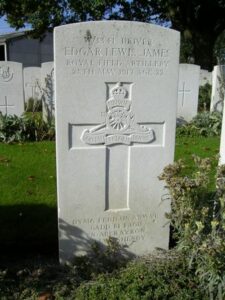
James Wright James, Captain, Hampshire Regiment. James was the son of James and Annie James, of 4, Dynevor Terrace, Llandebie. James resided at 81, College Road, Ammanford, and was Chairman of the Conservative and Unionist Association. James served with the 15th Battalion, Hampshire Regiment, attached to 122 Brigade, 41st Division. This Division was formed in September 1915, and moved to France by 6 May 1916, concentrating near Steenwerck, where they began familiarisation with trench warfare in the areas of Ploegsteert and the Douve valley, south of Ypres. They remained here until August 1916, when they moved to the Somme, and took part in the Battle of Flers-Courcelette. The Division remained in the line, pushing on to Courcelette over the next few days before coming out for a rest and re-fit. They then fought at the Battle of Le Transloy, and it was just after this that James was killed in action, on 7 October 1916. He has no known grave, and so is commemorated on the Thiepval Memorial, France.
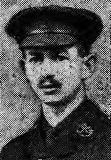
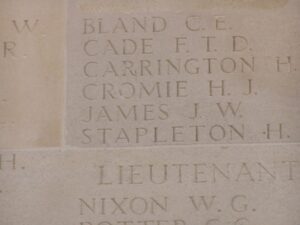
John Jenkins, Private, S/9161, Seaforth Highlanders. John was born in Merthyr Tydfil, the son of William and Elizabeth Jenkins. The family had moved to Betws by 1901, and John lived with his wife Edith Jenkins, at 49, Wind Street, Ammanford. John enlisted at Ammanford into the 8th Battalion, Seaforth Highlanders, which was attached to 44 Brigade, 15th (Scottish) Division. During July 1915 the Division landed in France, where they were to win regard by the enemy as one of the most formidable in the British Army. Here they fought at the Battle of Loos, and in spring 1916, the Division was involved in German gas attacks near Hulloch, and in the defence of the Kink position. John became a victim of the gas attack, and sadly died of his wounds on 29 April 1916. He was 29 years old, and is buried at Noeux-Les-Mines Communal Cemetery, France.

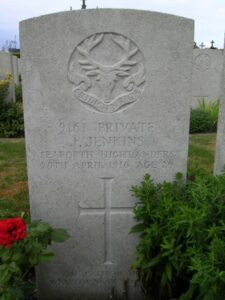
Abraham Jerrison, Lance Corporal, S/17877, Queens Own Cameron Highlanders. Abraham was the son of William and Adelaide Jerrison of 63, Bedford Street, Burton on Trent. He had moved to Ammanford after 1911 to work with his father William as a roofer, and enlisted at Llanelli into the 1st Battalion, Queen’s Own Cameron Highlanders. The battalion was attached to 1 Brigade, 1st Division. The Division had been one of the first to arrive in France, fighting at the Battle of Mons, and taking part in the retreat to the Marne, where the Germans were stopped. They then fought at the Aisne, and at Chivy, before being moved north to Ypres. Here they fought at the First Battle of Ypres, where they again stopped the German Offensive, before wintering in Flanders. The following year saw them in action again at the Battle of Aubers, before moving South to Loos, where they fought during the Battle of Loos, which is where Abraham was killed in action on 13 October 1915. He has no known grave, and so is commemorated on the Loos Memorial, France.
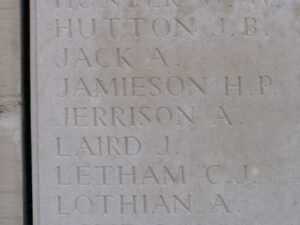
David James John, Private, 50384, Welsh Regiment. David was the son of David and Hannah John, of Llety Perwen, Tirydail, Ammanford. He enlisted at Ammanford on 28 April 1916 into the 22nd Battalion, Welsh Regiment, which was a training battalion for the 38th (Welsh) Division. On 21 July 1916 David was discharged from the Welsh Regiment after being deemed unlikely to become an efficient soldier. Nothing more of him can presently be traced.
David Jones, Pioneer, 159329, Royal Engineers. David was the son of William and Mary Ann Jones, of Pantycelyn, Tycroes. He had enlisted at Bangor into the army, and served with the Royal West Kents before being transferred to the 5th Battalion Special Brigade, Royal Engineers, a Special (Gas) Company. The company was on the Somme in the summer of 1916, and it was here that David was wounded. He was brought to the casualty clearing station at Heilly in the picturesque Somme valley for treatment, but died there on 21 August 1916, aged 22. David is buried at Heilly Station Cemetery, Mericourt-L’Abbe, France.

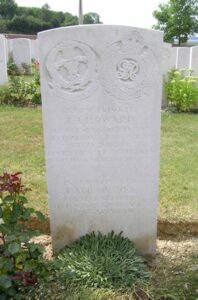
David George Jones, Corporal, 3693, Welsh Regiment. David was the stepson of Harold and Elizabeth Whitehall, of Pantyffynon, and the brother of Thomas Penry Jones, of Bristol House, Penygroes. He resided at Pantyffynon prior to the war, and enlisted at Ammanford into the 1/4th Battalion, Welsh Regiment, which was a territorial Battalion, which formed part of South Wales Brigade. On 17 April 1915 it was attached to 159th Brigade, 53rd Division and in July 1915, the 53rd Welsh Division was shipped to the Mediterranean. On 9 August 1915, the Division landed at Suvla on Gallipoli, and were thrown immediately into desperate fighting. David was killed in action on 10 August 1915, the day after landing on the hostile shores of Gallipoli. He was just 20 years old, and is commemorated on the Helles Memorial. David is shown on the memorial as D. J. Whitehall.
David Thomas Jones, Able Seaman, J/50063, Royal Navy. David was born on 23 January 1892, the son of William and Elizabeth Jones, of Brynderi, Penybank, Ammanford. He served in the Royal Navy aboard H.M.S. Anchusa, a Royal naval Sloop. Anchusa was sunk on 16 July 1918 by the German submarine U-54 off the north coast of Ireland. David was among 78 men killed in the sinking. He was 26 years old, and is commemorated on the Plymouth Naval Memorial, Devon.
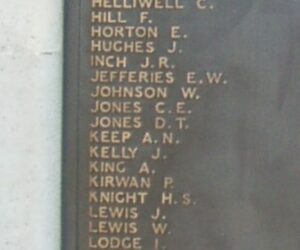
George William Jones, Private, 31779, Welsh Regiment. George was the son of William Henry and Clara Elizabeth Jones, of The Chadwick’s, 37, Maesquarre Road, Ammanford. He enlisted there into the 13th Battalion, Welsh Regiment, attached to 114 Brigade, 38th (Welsh) Division. The Division had landed in France during December 1915 and had spent their first winter in the trenches near Armentieres. In June they marched south to the Somme, where they took part in the famous capture of Mametz Wood in July 1916. The Division suffered terrible casualties at Mametz, and were taken out of the line, and moved to Ypres to rebuild. Here they fought at Pilckem and Langemarck, then moved to Armentieres, where they remained from September 1917 until March, 1918 when the German Spring Offensive was launched. The British had been over-run on the Somme, and so in April the Division was moved south, taking up positions North of Albert, from where they weathered the storm of the coming months, until the war turned during the Battle of Amiens, on 8 August 1918. The Germans had now lost the upper hand, and the British regained the lost ground on the Somme after an attack which began on 21 August 1918, with the 38th Welsh in the midst of the attack during the Battle of Albert, and then moving east, where they fought at the Battle of Bapaume. Then the move began towards the mighty Hindenburg Line, and the Division carried on with their march east, fighting at the Battle of Havrincourt, and the Battle of Épehy, where George was killed in action on 18 September 1918, aged just 20. He has no known grave, and so is commemorated on the Vis-En-Artois Memorial, France.
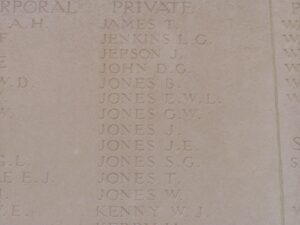
Hywel Herbert Saunders Jones, Second Lieutenant, The Queen’s (Royal West Surrey Regiment). Hywel was the son of Reverend John Jones and Mary Jones. His father was a clergyman from Ammanford, and Hywel had been born in St. George’s Rectory, Nevis, West Indies on 13 December 1897, while his father was carrying out missionary work on the island. The family then returned to Wales, and moved to Itton Rectory, Chepstow, Monmouth. Hywel was educated at St. John’s School, Leatherhead, and had won a place at Jesus College Oxford, before joining the Officer Training Corps. He was commissioned into the 1st Battalion, Royal West Surrey Regiment on 22 November 1916, and joined the battalion in France, where it was attached to 100 Brigade, 33rd Division. The division wintered on the Somme, and took part in the advance following the German withdrawal to the Hindenburg Line in March 1917. Hywel was killed in action during the advance on 4 March 1917, aged 19. He is buried in Péronne Communal Cemetery Extension, France. Hywel is not commemorated locally.
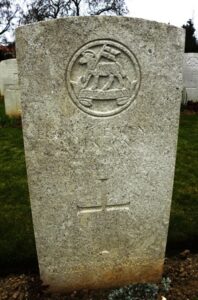
Jeremiah Jones, Private, 50256, Royal Warwickshire Regiment. Jeremiah was born in Cardiff, and resided in Ammanford prior to the war. He enlisted at Pontypool into the 16th Battalion, Royal Warwickshire Regiment, which was attached to 15 Brigade, 5th Division. Jeremiah probably joined the battalion in 1916 after the Somme offensive. On 5 October, after suffering heavy casualties, the Division moved to Festubert, where they remained until March 1917. They next saw action at the Battle of Arras. On 7 September, they were pulled out of the line again, and moved north to join the great offensive in Flanders- Third Ypres, or Passchendaele as it is better known. The 5th Division was one of five British formations selected to be moved to Italy, and moved to the line along the River Piave, taking up positions in late January 1918. Unfortunately this pleasant period was not to last, for the Division was recalled hurriedly to France, once the enemy had made an attack in overwhelming strength on 21 March. The Division moved to Flanders, where they fought at the Battle of Hazebrouck, where they played a part in the Defence of Nieppe Forest. They moved out of the line for a rest, but two weeks moved into positions near Albert, which is where Jeremiah was wounded. He died of wounds on 24 August 1918, and is buried at Bagneux British Cemetery, Gézaincourt.
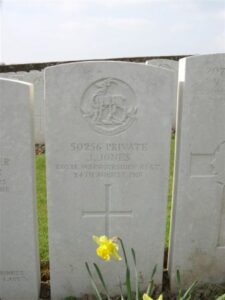
John Jones, Private, 13022, Royal Welsh Fusiliers. John was the fourth son of Griffith and Sarah Jones, of Meurig Villa, Penybank Road, Ammanford. He enlisted in September 1914 at the age of just 19, and joined the 9th Battalion, Royal Welsh Fusiliers, which was attached to 58 Brigade, 19th (Western) Division. John left Britain for France during July, 1915 and his Battalion moved to positions in the line just north of Loos, near Cuinchy. From here they took part in the opening charge of the first day of the Battle of Loos, on 25 September 1915, and sadly John was never seen again. He was reported as missing in action that day, but he was later confirmed dead, and is now commemorated on the Loos Memorial.
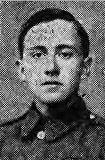
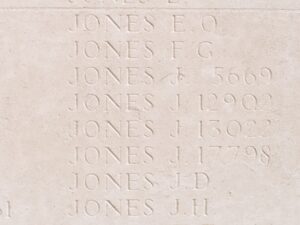
Maurice Jones, Corporal, 3397, Welsh Regiment. Maurice was born in Tregaron, and was the Husband of Sarah Anne Walters (formerly Jones), of 39, Harold St., Tirydail, Ammanford. He enlisted at Ammanford into the 1/4th Battalion, Welsh Regiment, which was attached to 159 Brigade, 53rd (Welsh) Division. The Division moved to the Mediterranean, sailing from Devonport in July 1915 to the Mediterranean, and landed at Cape Helle, Gallipoli on 9 August 1915. Here they immediately faced the chaotic leadership that was to lead to the ultimate failure of the campaign, and spent the next few days in isolated pockets, fighting against a Turkish counter-attack. Maurice was killed in action just days after landing, on 10 August 1915. He was 36 years old, and has no known grave, and so is commemorated on the Helles Memorial, Gallipoli.
Rees Jones, Private, 75289, Welsh Regiment. Rees was the son of Evan and Elizabeth Jones, of 42, Walter Road, Ammanford. He enlisted at Cardiff into the army, and was posted to France, probably early in 1918, to join the 15th Battalion, Welsh Regiment, which was known as the Carmarthen Pals battalion. The battalion had been in France since December 1915 attached to 114 Brigade, 38th (Welsh) Division. The Division had famously captured Mametz Wood in July 1916, and the Pilckem Ridge on 31 July 1917. After being withdrawn from Ypres, the Division moved to Armentieres, where it remained from September 1917 until March 1918 when the German Spring Offensive was launched. The British had been over-run on the Somme, and so in April the Division was moved south, taking up positions North of Albert, from where they weathered the storm of the coming months. The war turned during the Battle of Amiens, on 8 August 1918. The Germans had now lost the upper hand, and the British regained the lost ground on the Somme after an attack which began on 21 August 1918, when the 15th Welsh crossed the flooded River Ancre, and began their drive up Thiepval Ridge. Over the coming days the Welshmen pushed east, towards the mighty Hindenburg Line, and fought at the Battle of Havrincourt, and the Battle of Épehy. A short rest period ensued, during which time the Canal du Nord was breached, so opening a passage through the Hindenburg Line. Rees was wounded during the latter stages of the war, and returned to the UK for treatment. Sadly he died of wounds at Bradford on 16 November 1918 aged just 23, and is buried at Ammanford (Christian Temple) Congregational Burial Ground.
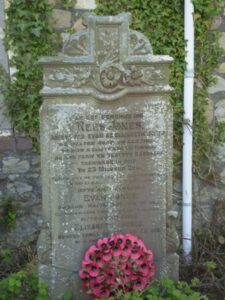
Thomas Beriah Jones, Private, 44030, Durham Light Infantry. Thomas was the son of John Clement Jones and Anne Jones, of New Inn Hotel, Ammanford. He enlisted at Llandeilo on 26 July 1916 into the Army Service Corps. He later transferred into the 10th Battalion, Durham Light Infantry, attached to 43 Brigade, 14th (Light) Division. The Division was to see its first action during the Action of Hooge, where the Division were the first to be attacked by the German use of flamethrowers. They then fought at the Second attack on Bellewaarde. In July 1916 they moved to the Somme, and fought at the Battle of Delville Wood, and then the Battle of Flers-Courcelette, and in March, 1917 followed the German Retreat to the Hindenburg Line. May saw them at Arras, where they took part in the First Battle of the Scarpe, and later at the Third Battle of the Scarpe, and then they were sent to Ypres, where they fought at the Battle of Langemarck, and at the First Battle of Passchendaele. Thomas was killed in action here on 23 August 1917, aged 18. He has no known grave, and so is commemorated on the Tyne Cot Memorial, Belgium.
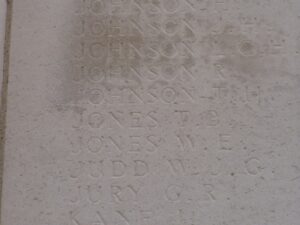
Thomas John Jones, Private, 42843, Labour Corps. Thomas was the son of David and Diana Jones, of Violet Villa, Pantyffynon. He had worked for the GWR at Garnant prior to the war, before taking up a post at Caerbryn Colliery. Thomas enlisted at Llandeilo into the 7th Battalion, King’s Liverpool Regiment, which was attached to 165 Brigade, 55th (West Lancashire) Division. By the time the Battle of Passchendaele had opened, Thomas had been transferred to the Labour Corps. He was at Ypres when he was killed in action on 24 October 1917, after a German shell hit the dugout that he was in, killing Thomas and five other men. Thomas was 26 years old, and is buried at Duhallow A.D.S. Cemetery, Belgium.
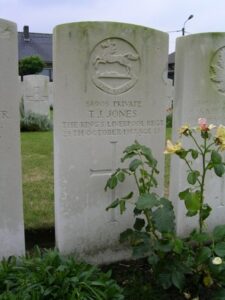
Thomas William Jones, Private, 14984, Royal Welsh Fusiliers. Thomas was the son of Thomas and Letitah Jones, of 46, Wernolau Road, Hopkinstown, Ammanford. He enlisted at Ammanford into the 11th Battalion, Royal Welsh Fusiliers, who were attached to 67 Brigade, 22nd Division. The Division crossed to France in early September 1915. However it’s stay in France was to be very short, and on 27 October 1915 the Division began to embark for Salonika. It completed concentration there in November, although the final artillery units were still coming in as late as 13 December 1915. It remained in the theatre for the rest of the war, taking part in the Retreat from Serbia during December 1915. Between 10 and 18 August 1916 they fought at the battle of Horseshoe Hill, then in September 1916 at the battle of Machukovo. Throughout April and May 1917 the Division fought at the battle of Doiran, and then on 18 September 1918 at the Second Battle of Doiran. Thomas was killed in action here on 18 September 1918, aged 24. He has no known grave, and so is commemorated on the Doiran Memorial, Greece.
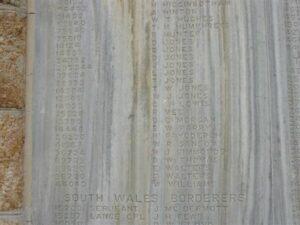
William Jones, Able Seaman, R/4942, Royal Naval Division. William was born on 21 February 1881 the son of William and Anne Jones, of 29, Ivy Cottage, Pantyffynnon. He married prior to the war, and lived with his wife, Margaret Jones, at 23, Baldwins Crescent, King’s Dock, Swansea. William enlisted there into the Royal Naval Volunteer Reserve, and due to the surplus of naval men, was posted to the Hood Battalion, Royal Naval Division. The Naval Brigades were originally sent to Antwerp and Dunkirk in September and October 1914 to guard against invasion by the Germans. However Antwerp fell to the Germans soon after, and so many of the RND units were withdrawn to England. After a lengthy period of refit and training the Division moved to Egypt preparatory to the Gallipoli campaign, and took part in the landings of 25 April 1915. After being evacuated from Gallipoli after the campaign had lulled into a stalemate, the Division was transferred from the authority of the Admiralty to the War Office on 29 April 1916, and was redesignated the 63rd (Royal Naval) Division on 19 July 1916. The Division moved to France, arriving at Marseilles in May 1916 and moved to positions on the Somme, where it took part in the Battle of the Ancre, and the resulting Operations on the Ancre. In April 1917 the Division were at Arras, and fought at the Second Battle of the Scarpe, where they captured Gavrelle. They then fought at the Battle of Arleux, before moving north to Ypres, where they took part in the Second Battle of Passchendaele. Their next major action was at Cambrai, during the Action of Welch Ridge, where William was killed in action on 30 December 1917 aged 36. He has no known grave, and so is commemorated on the Thiepval Memorial, France.
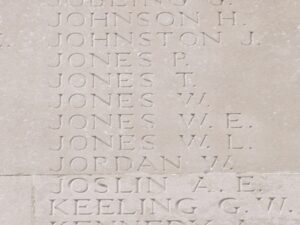
William Jones, Private, 6314, Welsh Regiment. William was the husband of Annie Jones, of 16, Rice St., Betws, Ammanford. He was a pre war regular, who had rejoined the army at Pontypridd at the outbreak of war, joining the 2nd Battalion, Welsh Regiment. The Battalion was attached to 3 Brigade, 1st Division, which had been one of the first to arrive in France, fighting at the Battle of Mons, and taking part in the retreat to the Marne, where the Germans were stopped. They then fought at the Aisne, and at Chivy, before being moved north to Ypres. Here they fought at the First Battle of Ypres, where they again stopped the German Offensive, before wintering in Flanders, where they took part in the Defence of Givenchy. William was killed in action here on 21 December 1914 aged 32. He is buried at Brown’s Road Military Cemetery, Festubert.
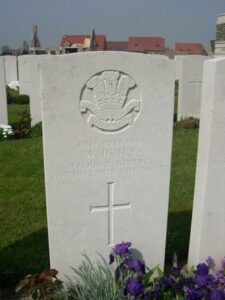
William Howell Jones, Private, 5244, Welsh Regiment. William was the son of Jacob and Anne Jones and the husband of Rachel Annie Jones, at 9, Moelwyn Terrace, Garnant. He enlisted at Ammanford into the 1/4th Battalion, Welsh Regiment, who were attached to 159 Brigade, 53rd (Welsh) Division. The Division moved to the Mediterranean, sailing from Devonport in July 1915. They landed at Gallipoli on 9 August 1915, and immediately faced the chaotic leadership that was to lead to the ultimate failure of the campaign, spending the next few days in isolated pockets, fighting against a Turkish counter-attack. William was killed in action just days after landing, during the Battle of Sari Bair (Attack on Scimitar Hill), on 10 August 1915, aged 24. He has no known grave, and so is commemorated on the Helles Memorial, Gallipoli.
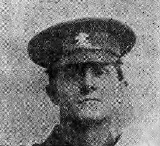
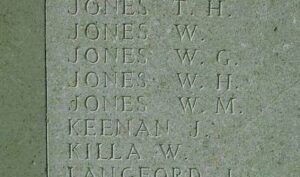
William John Jones, Gunner, 2985, Royal Field Artillery. William was the son of John and Letitia Jones, of Norton Bridge, Pontypridd, and the Husband of Ethel Mary Jones, of Maerdy Fach, Ffairfach, Llandilo. He enlisted at Pontypridd into the Royal Field Artillery, and served with ‘B’ Battery, 122nd Brigade, attached to the 38th (Welsh) Division. The Division had landed in France during December 1915 and had spent their first winter in the trenches near Armentieres. In June they marched south to the Somme, where they famously captured Mametz Wood in July 1916. The Division suffered terrible casualties at Mametz, and were taken out of the line, and moved to Ypres to rebuild. Here they fought at Pilckem and Langemarck, then moved to Armentieres, where they remained from September 1917 until March 1918 when the German Spring Offensive was launched. The British had been over-run on the Somme, and so in April the Division was moved South, taking up positions North of Albert, from where they weathered the storm of the coming months, until the war turned during the Battle of Amiens, on 8 August 1918. The Germans had now lost the upper hand, and the British regained the lost ground on the Somme after an attack which began on 21 August 1918, with the 38th Welsh in the midst of the attack during the Battle of Albert, and then moving east, where they fought at the Battle of Bapaume. Then the move began towards the mighty Hindenburg Line, and the Division carried on with their march east, fighting at the Battle of Havrincourt, and the Battle of Épehy. Sometime after this, William suffered gas poisoning, and was evacuated to the Base Hospital at Etaples, where he sadly died on 8 November 1918. He was 26 years old, and is buried there, at Étaples Military Cemetery, France.
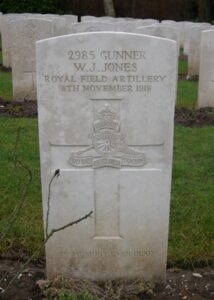
David Morgan Lewis, Sapper, 145192, Royal Engineers. David was the son of Mrs. Mary Ann Evans, of 28, Betws Road, Ammanford. He enlisted at Ammanford into the Royal Engineers, and served with the 69th Field Company, attached to the 12th (Eastern) Division. The Division landed at Boulogne on 31 May 1915, and took over the line at Ploegsteert Wood. They then moved south and fought in the Battle of Loos, and the subsequent actions of the Hohenzollern Redoubt, and remained there until March 1916. By June they were in position at the Somme, and attacked Ovillers on 2 July 1916. They fought at Pozieres and Le Transloy before being moved to the Arras area during October 1916, where they fought in the March 1917 Battle of Arras, taking part in the First Battle of the Scarpe, and the Battle of Arleux. They then fought at the Third Battle of the Scarpe, and helped capture Rouex. The Division remained at Arras until taking part in the Battle of Cambrai in November, 1917. David was killed in action here on 30 November 1917 aged 26. He has no known grave, and so is commemorated on the Cambrai Memorial, Louverval.
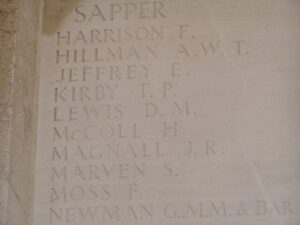
Evan Thomas Lewis, Gunner, 98557, Royal Field Artillery. Evan was the son of Thomas and Harriet Lewis, of Afania, Florence Road, Ammanford. He enlisted at Tumble into the Royal Field Artillery, and served with ‘D’ Battery, 57th Brigade, attached to the 10th (Irish) Division. On the 27th June the Division received orders to prepare for service on Gallipoli, and embarked at Liverpool on the 9th July. By the end of the month most units had assembled on Lemnos, and from 6 August 1915 landed on Gallipoli at Suvla Bay, less the 29th Brigade, which went to ANZAC Cove. The main body made an attack on Chocolate Hill on 7 August. Parts of 29th Brigade took part in actions on Sari Bair between 6 and 10 August, and Hill 60 later that month. At the end of September the Division evacuated to Mudros, and moved to Salonika, landing there between 5 and 10 October. The Battery had remained at Gallipoli though, and Evan was wounded during the closing down stages of the campaign. He died of wounds at Gallipoli on 17 December 1915 aged just 21, and is buried at Lancashire Landing Cemetery.
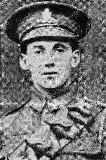

William David Lewis, Sergeant, 2625, Royal Field Artillery. William was born in Port Talbot, and enlisted at Ammanford into the Royal Field Artillery. He served with their ‘B’ Battery, 56th Brigade, which was attached to the 52nd (Lowland) Division. Initially assigned to the defence of the Scottish coast, the Division moved to Gallipoli (less two of its artillery Brigades) arriving there by early July 1915. While moving from Scotland, the Division lost 210 officers and men killed, and another 224 injured, in a train crash near Gretna that involved the 1/7th Battalion, the Royal Scots. After being evacuated from Gallipoli early in 1916, by April 1916, the Division had moved to Egypt, where it again saw action. It moved into Palestine early in 1917, and took part in the Palestinian Offensive, fighting at the Battles of Gaza, and taking part in the capture of Jerusalem. The Division received orders in March 1918 to proceed to the hard-pressed Western Front, where it then remained for the duration of the war, taking part in the great advance to victory. They fought in the Battle of Albert, before taking part in the Battle of the Scarpe, the Battle of Drocourt-Queant, the Battle of the Canal du Nord and the Final Advance in Artois, where William was wounded. He died of wounds on 11 October 1918 and is buried at Delsaux Farm Cemetery, Beugny.
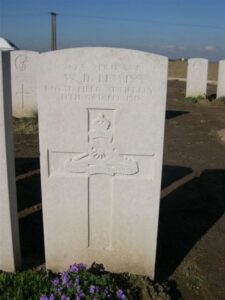
John Mathews, Acting Corporal, SE/13281, Royal Army Veterinary Corps. John was the son of William and Mary Matthews, of Oakfield House, Llandebie Road, Ammanford. He enlisted at Carmarthen into the Royal Army Veterinary Corps, and was attached to the 20th Veterinary Hospital in Egypt. John died of sickness in Egypt on 23 May 1918, aged 43, and is buried at Cairo War Memorial Cemetery, Egypt. Many thanks to Mick McCann of British War Graves for the photograph.
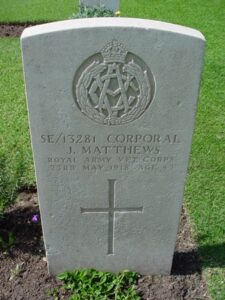
Walter McNulty, Private, 51404, Cheshire Regiment. Walter was the son of James and Mary McNulty, of 10, Earl Street, Burnley Lane, Colne Road, Burnley. He had played football for Ammanford A.F.C. prior to the war, and enlisted at Ammanford into the Army Service Corps on 1 September 1914. Within weeks he was in France, and then worked for three years as a Driver with the ASC. He was transferred into the 15th Battalion, Cheshire Regiment on 24 September 1917. The battalion was attached to 105 Brigade, 35th Division at Ypres. Walter was wounded during the Second Battle of Passchendaele, and died of his wounds on 24 November 1917, aged 27. He has no known grave, and is commemorated on the Tyne Cot Memorial, Belgium. Walter is not commemorated locally.
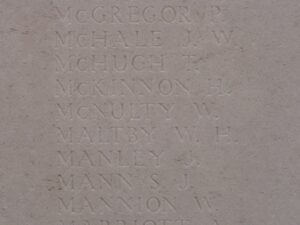
George Morgan, Private, G/89642, Middlesex Regiment. George was the son of Evan James and Emily Morgan, of 1, North Bank, Llandeilo. He resided at 2, Hall Street, Ammanford prior to the war, and enlisted at Clipston, Northants in April 1916 into the Royal Engineers, serving with the 170th Tunnelling Company, Royal Engineers in France. In 1918 George was transferred to the 18th Battalion, Middlesex Regiment, which was attached to the 33rd Division as Pioneers. The Division was in Flanders when the German Spring Offensive hit, and fought at the Battle of Messines, the Battle of Hazebrouck and the Battle of Bailleul, where the Division played a part in the Defence of Neuve Eglise. They then took part in the First Battle of Kemmel, and recaptured of Ridge Wood, before being sent to the St. Quentin area. Here they took part in the great offensive which was to end the war, fighting at the Battle of the St Quentin Canal, and the Battle of Cambrai, before moving north east and fighting at the Pursuit to the Selle and the Battle of the Selle. The Division was relieved on the 26th October after capturing Englefontaine, on the southern edge of the Forest of Mormal. Back in action on the 5th November it advanced through the forest and crossed the Sambre. George was taken ill with pneumonia towards the end of the war, and was moved to the Base Hospital at Etaples, where he died on 31 October 1918, aged only 19. He is buried there at Etaples Military Cemetery, France. George is not commemorated at Ammanford.
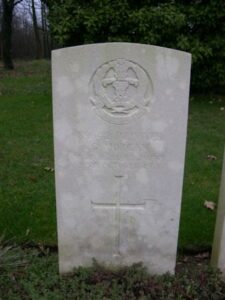
Walter Ewart Morgan, Gunner, W/5508, Royal Horse Artillery. Walter was the son of the Reverend Maelfryn Morgan and Sara Ann Morgan, of Manoravon, Ystradgynlais. The family had resided for many years at London House, Brynamman prior to the war, and Walter enlisted at Ammanford into the 38th (Welsh) Divisional Royal Artillery. He landed in France with the division in December 1915 but was later posted to the Royal Horse Artillery, and served with ‘B’ Battery, 15th Brigade, which was attached to the 7th Division. The Division had been in France since 6 October 1914, and had fought at First Ypres, and helped stop the German advance through Belgium. They had taken part in almost every major engagement thereafter, at Loos in 1915 and the Somme in 1916, where they captured Mametz, one of the few successes of 1 July 1916. In March 1917 the Division followed up the German Retreat to the Hindenburg Line, and took part in Flanking Operations Round Bullecourt. The 7th were moved into a scene of incredible ferocity at Bullecourt, a strongly fortified village on the Hindenburg Line, and alongside the Australians played a major role in penetrating the village defences. Walter was taken ill around this time, and was moved to the Base Hospital at Calais, where he sadly died on 13 May 1917. He was only 18 years old, and is buried there, at Calais Southern Cemetery.
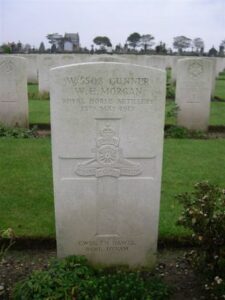
William Joseph Morgan, Private, 8564, Machine Gun Corps. William was the son of Thomas and Mary Morgan, of The Mere, Almeley, Hereford. He was living at Ammanford prior to the war, and enlisted there into the 9th Welsh. He then served in France from 1916 on, before becoming transferred to the Machine Gun Corps. William was invalided home at some time, and died in hospital in Northumberland on 4 November 1918, aged 32. He is buried in Broxwood (Holy Family) Roman Catholic Churchyard, Herefordshire. William is not commemorated locally.
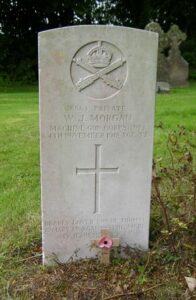
George Morris, Private, G/1237, Royal West Kent Regiment. George was from Kingston-on-Thames, Surrey. He was an army pensioner and resided at Station Road, Tirydail prior to the war. In August 1914 he rejoined the colours and landed in France with the 1st Battalion, Royal West Kent Regiment on 7 December 1914. At some time later he was transferred into the 6th Battalion, Royal West Kent Regiment, which was attached to 37 Brigade, 12th (Eastern) Division. The Division had landed at Boulogne on 31 May 1915, and took over the line at Ploegsteert Wood. They then moved south and fought in the Battle of Loos, and remained there until March 1916. By June the division was in position at the Somme, and attacked Ovillers on 2 July. It fought at Pozieres and Le Transloy before being moved to the Arras area during October 1916, where it fought in the Battle of Arras, taking part in the First Battle of the Scarpe, and the Battle of Arleux, and then fought at the Third Battle of the Scarpe, taking part in the capture of Rouex. George was killed in action at Arras on 17 July 1917. He has no known grave and is commemorated on the Arras Memorial, France. George is not commemorated locally.
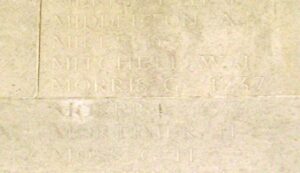
William Henry Morris, Sergeant, 2789, Royal Field Artillery. William was born at Maesteg in 1879, the son of Morris and Elizabeth Morris. He resided with his sister Elizabeth and her husband Owen Phillips, at 23, Quay Street, Ammanford prior to the war, working as a collier in one of the local mines. He enlisted at Ammanford into the Royal Field Artillery on 1 September 1914 and was posted to France with C/65th Battery, Royal Field Artillery on 30 May 1915. On 20 January 1916 William was posted to the Mediterranean, but after six months there he returned home ill. William was discharged from the army as medically unfit on 15 August 1916. He looks to have died on 15 July 1919 as a result of illness brought on by his war service. No more is currently known of William, as he is not commemorated by the CWGC.
St. Aubyn Stanley Robert Myall, Private, 24137, Welsh Regiment. St. Aubyn was born in India in 1855, the son of Edwin Myall and Huldah Balentine Myall. He had worked as a coal miner at Glyncorrwg and at Ammanford prior to the war. He enlisted at Cardiff into the 16th Battalion, Welsh Regiment, which moved to France in December 1915 attached to 115 Brigade, 38th (Welsh) Division. The Division spent its first winter in the trenches near Armentieres. In June they marched south to the Somme, where they were tasked with the capture of Mametz Wood. The attack on the wood began on 7 July 1916, but met with fierce resistance, and the 16th Welsh were decimated by heavy machine gun fire from within the strongly defended wood. St. Aubyn was killed in action during this first attack on the wood, on 7 July 1916, aged 30. He has no known grave, and so is commemorated on the Thiepval Memorial, France. St. Aubyn is not commemorated locally, but on a brass plaque at Glyncorrwg Primary School, which has been moved there from the local United Methodist Church.
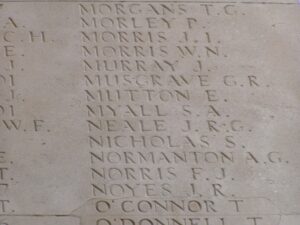
Samuel Nicholas, Private, 39913, Labour Corps. Samuel was the son of William and Ann Nicholas, of Llangennech. He resided with his wife, Lizzie Mary Nicholas, at 66, Pantyffynon Road, Ammanford prior to the war. Samuel enlisted at Ammanford into the 15th Battalion, Welsh Regiment, known as the Carmarthen Pals, but was later posted to the 7th Battalion, Royal Welsh Fusiliers. He must have been wounded at some time, as he was again transferred, joining the 911th Area Employment Company, Labour Corps. Samuel was wounded during the German Offensive of spring 1918, and died as a result of his wounds at St. Omer on 31 May 1918, aged 29. He is buried at Longuenesse (St. Omer) Souvenir Cemetery, France, in Grave V. B. 46. Two men are commemorated on his grave, so I have zoomed into Samuel’s details.
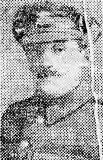
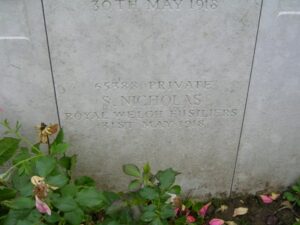
Keirne O’Brien, Private, 22575, Welsh Regiment. Keirne was from Waterford, Ireland, but was working at Ammanford at the outbreak of war. He enlisted at Ammanford in November 1914 into the Welsh Regiment, and was posted to France on 27 January 1915, joining the 1st Battalion, Welsh Regiment, which was attached to 84 Brigade, 28th Division. The division fought in the Second Battle of Ypres during April and May 1915, and suffered terrible casualties. It was brought back up to strength before moving to Loos, and took part in the Battle of Loos, which began on 25 September 1915. Keirne was killed in action during heavy fighting at the Hohenzollern Redoubt on 2 October 1915. He has no known grave and is commemorated on the Loos Memorial, France. Keirne is not commemorated locally.
William Anderson Onslow, Private, 200983, Welsh Regiment. William was born in Soho, London. He resided in Ammanford prior to the war, and enlisted there into the Welsh Regiment. During 1918 he had become attached to the 4/5th Battalion, Welsh Regiment, which was part of 159 Brigade, 53rd (Welsh) Division. The Division were still in Palestine then, and were taking part in the Final Offensive Beyond the Jordan, when William was taken ill. He was brought to the Base Hospital at Kantara where he died on 27 October 1918. William is buried there, at Kantara War Memorial Cemetery. William is not commemorated locally.
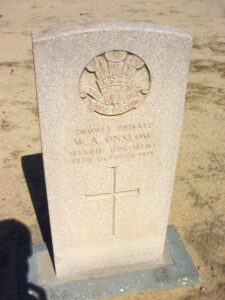
Daniel Owens, Private, 6406, Royal Welsh Fusiliers. Daniel was born near Llanberis, Carnarvonshire, the son of William and Martha Owens. He had come to south Wales to work as a collier several years prior to the war and lodged at Ammanford. Daniel enlisted at Ammanford into the 9th Battalion, Royal Welsh Fusiliers on 3 September 1914, stating that he had been born at Brynamman, but just over a month later was discharged after being deemed likely not to become an efficient soldier. He re-enlisted into the Royal Welsh Fusiliers soon afterwards and was drafted to France 22 June 1915, joining the 1st Battalion, Royal Welsh Fusiliers, which was attached to 22 Brigade, 7th Division. The Division had just taking part in a futile attack against the village of Festubert, where the 1st RWF had suffered terrible casualties whilst assaulting the line running from the Rue Quinque to Rue D’Ouvert. Daniel joined the battalion in billets at St. Hilaire, where it was rebuilding its strength. By September the Division had moved to positions near Vermelles and on 25 September took part in the Battle of Loos. The 1st RWF alone suffered around 400 casualties during the opening day of the battle and moved to Sailly Labourse to begin rebuilding again. The Division then took over the Cambrin sector, before moving to the Cuinchy Sector, before moving south to the Somme in December 1915, taking over positions at Bois Francais, facing Fricourt. The Division had taken part in the opening assault of the Somme offensive on 1 July 1916, capturing the village of Mametz, one of the few successes of 1 July 1916. The battalion then took part in further attacks to push forwards, to the south of Mametz Wood, and upon being relieved, witnessed the troops of the 38th (Welsh) Division moving forward to launch its assault on Mametz Wood. On 14 July, with the wood taken, the 7th Division moved back into the line, with orders to capture Bazentin-le-Petit, before taking part in the terrible attacks on High Wood over the coming days. On 22 July the 1st RWF was relieved, moving back into reserve to rest and rebuild at La Chaussee. By 12 August the battalion had moved forwards to Dernancourt, and on 26 August marched further forward, to take part in the Divisions assault on Ginchy. The Division saw heavy fighting over the coming days, before the 1st RWF had another short break, but on 1 September the battalion received orders to push forwards again to launch a fresh assault on Ginchy from Montauban Alley. Daniel was one of four men killed whilst the battalion was moving into position on 2 September 1916. The 29-year-old was buried in Bernafay Wood British Cemetery, Montauban, France. Daniel is not commemorated locally.
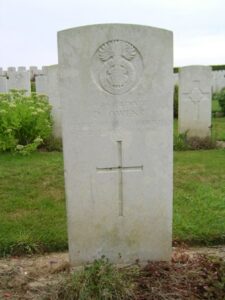
James Arthur Parry, Private, 29429, South Wales Borderers. James was the son of John and Gwen Parry, of “Parcbach,” Cwmdu, Llandeilo. James enlisted at Ammanford into the army, and was posted to the 2nd Battalion, South Wales Borderers. The Battalion formed part of 87 Brigade, 29th Division, and had fought at China and Gallipoli earlier in the war, before moving to France. The Division took heavy casualties on the Somme on 1 July 1916, and in 1917 took part in Third Ypres. It then moved south to Arras, and took part in the Battle of Cambrai, where the use of massed tank formations was pioneered. James was killed in action, aged just 20, on 3 December 1917, and is commemorated on the Cambrai Memorial, Louverval.
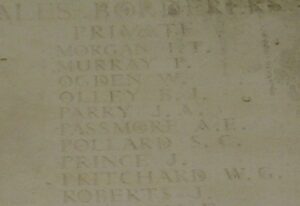
Thomas Peter Parry, Private, 4197, Welsh Regiment. Thomas was the son of John and Gwenllian Parry, of Esgairwen, Cwmdu, Llandeilo. Thomas enlisted at Ammanford into the 1/4th Battalion, Welsh Regiment. The Battalion formed part of 159 Brigade, 53rd (Welsh) Division, and landed at Gallipoli on 9 August 1915. The Welsh were immediately thrown into heavy fighting, and it was during the resulting Battle of Sari Bair, that Thomas was killed in action on 11 August 1915. He is commemorated on the Helles Memorial.
Ernest George Pepler, Private, 45916, Royal Defence Corps. Ernest was born in Corsham, Wiltshire, and was the Husband of Elizabeth Ann Pepler, of Railway Terrace, Llansamlet. They had resided at 6, Harold Street, Tirydail, Ammanford for several years prior to the war and had enlisted at Newport into the South Wales Borderers, and had served in France from 15 July 1916, before being transferred into the Royal Defence Corps. Ernest died at home of sickness on 15 July 1918 aged 38, and is buried at Llansamlet (Tabor) Calvinistic Methodist Chapelyard.
Robert John Phillips, Driver, W/3691, Royal Field Artillery. Robert was the son of William Henry and Charlotte Louisa Phillips, of Sunny Villa, 51, Walter Road, Ammanford. He enlisted at Ammanford into the Royal Field Artillery, and served with ‘B’ Battery, 122nd Brigade, attached to the 38th (Welsh) Division. The Division had landed in France during December 1915 and had spent their first winter in the trenches near Armentieres. In June they marched south to the Somme, where they famously captured Mametz Wood in July 1916. The Division suffered terrible casualties at Mametz, and were taken out of the line, and moved to Ypres to rebuild. Here they fought at Pilckem and Langemarck, then moved to Armentieres, where they remained from September 1917 until March, 1918 when the German Spring Offensive was launched. The British had been over-run on the Somme, and so in April the Division was moved south, taking up positions North of Albert, from where they weathered the storm of the coming months, but the Artillery remained in Flanders. Robert was killed in action in Flanders on 3 May 1918 aged just 20, and is buried at Brandhoek New Military Cemetery No. 3, Belgium.
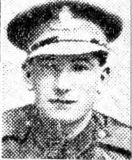
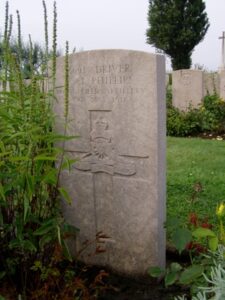
Ivor Powell, Private, 4214, Welsh Regiment. Ivor was the son of Mary Ann Powell, of Sunny Hill, Llandebie. He enlisted at Ammanford into the 1/4th Battalion, Welsh Regiment, which was the local Territorial Battalion, attached to 159 Brigade, 53rd (Welsh) Division. The Division landed at Cape Helles, Gallipoli, on 9 August 1915, and was immediately thrown into action, spending the next few days in isolated pockets, fighting against a Turkish counter-attack during the Battle of Sari Bair, and then at the Attack on Scimitar Hill. Ivor was killed in action the following day, on 10 August 1915 aged 19. He is commemorated on the Helles Memorial, Gallipoli.
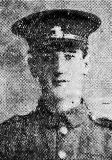
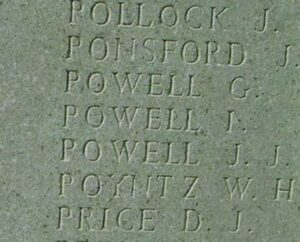
John Edward Price, Private, 39644, Royal Welsh Fusiliers. John was the son of Edward and Dinah Price, of Upper Mill, Rhayader, Radnorshire. He worked as a Grocer’s Assistant, and lived at 2, Talbot Road, Ammanford prior to the war. He enlisted there on 11 December 1915 into the Royal Welsh Fusiliers. John was posted to France in 1916, joining the 13th Battalion, Royal Welsh Fusiliers, which was attached to 113 Brigade, 38th (Welsh) Division. John probably joined the battalion after its withdrawal from the Somme, where the division had taken a mauling during the capture of Mametz Wood. After a brief spell at Hebuterne it trained in Northern France before taking up positions along the canal bank north of Ypres. The division remained here for almost twelve months, before launching its famed assault on the Pilckem Ridge on 31 July 1917. John was killed in action at Pilckem Ridge on 1 August 1918, while the division was consolidating its gains. He was 31 years old, and is commemorated on the Ypres (Menin Gate) Memorial, Belgium. John is not commemorated locally.
Thomas Price, Wheeler, 146068, Royal Field Artillery. Thomas was the son of Josiah and Elizabeth Price, of 3, Brookland Road, Llandrindod Wells, and was the Husband of E. Mary Price, of 40, Margaret Street, Ammanford. He enlisted at Ammanford into the Royal Field Artillery, and served with their 190th Brigade, attached to the 41st Division. This Division was formed in September 1915, and moved to France by 6 May 1916, concentrating near Steenwerck, where they began familiarisation with trench warfare in the areas of Ploegsteert and the Douve valley, south of Ypres. Thomas died here on 5 December 1916, aged 32, and is buried at Lijssenthoek Military Cemetery, Belgium.
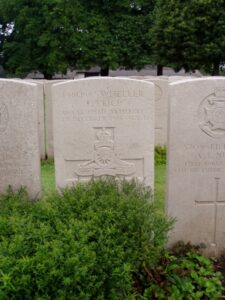
David John Rees, Private, 13188, Royal Welsh Fusiliers. David was born in Llandebie, the son of John and Elizabeth Rees, later of Caehelyg, Penygroes. He enlisted at Ammanford into the 10th Battalion, Royal Welsh Fusiliers, who were attached to 76 Brigade, 3rd Division. The 10th RWF had landed at Boulogne on 27 September 1915 and saw their first action at Ypres, around the Bluff and St. Eloi area, and in October transferred to the 3rd Division with the Brigade. The Division fought during the Battle of the Somme in July 1916, and David was Killed in Action during the Battle of Delville Wood on 20 July 1916 aged just 20. He is commemorated on the Thiepval Memorial, France.

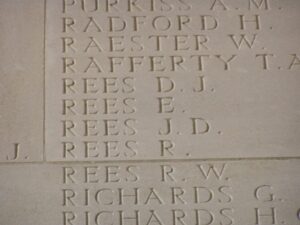
Stanley Rees, Private, 30570, South Wales Borderers. Stanley was the son of David and Sarah Ann Rees, of 12, Heollas, Ammanford. He served with the 2nd Battalion, South Wales Borderers, who had begun the war stationed in China, where they defeated the German Garrison at Tientsin, before being recalled to the UK. Here they joined 87 Brigade, 29th Division, and moved to Gallipoli via Egypt, landing on 25 April 1915. They remained here until evacuation to Egypt on 11 January 1916 and then moved to the Western Front on 15 March 1916. The Division took part in its first major action in France during the 1916 Somme Offensive, and fought at the Battles of Albert and Le Transloy, suffering heavy casualties. In the spring of 1917 they fought at the Battle of the Scarpe, which was part of the Arras Offensive, and then moved further north to Ypres. Here they fought at the Battle of Langemarck, and then at the Battles of the Menin Road, Polygon Wood, Broodseinde and Poelcapelle, before moving to Cambrai. Here they fought at the Battle of Cambrai in November and December 1917 before moving back to Flanders early in 1918. Stanley was killed in action at Ypres on 12 January 1918, aged 24, and is buried at Cement House Cemetery.
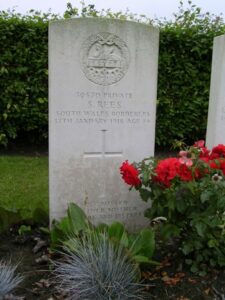
William Bevan Rees, Private, 241858, Welsh Regiment. William was the son of David and Elizabeth Rees, of Raven Hill, Penybanc. He served with the 1/5th Battalion, Welsh Regiment, which was attached to 159 Brigade, 53rd (Welsh) Division. The Division moved to the Mediterranean, sailing from Devonport in July 1915, and landed at Gallipoli on 9 August 1915. Here they immediately faced the chaotic leadership that was to lead to the ultimate failure of the campaign, and spent the next few days in isolated pockets, fighting against a Turkish counter-attack. The Division remained here throughout the coming months, and suffered severe losses in manpower strength during the great November 1915 blizzard on Gallipoli, when its total strength was reduced to less than that of a full-strength Brigade. On 11 December 1915 the Division was evacuated to Mudros, and by the 23rd December 1915 were moved to Egypt. They remained on the Suez Canal Defences for the next twelve months, and in early 1917 moved into Palestine, where they remained for the duration of the war, and William was killed in action there during the Third Battle of Gaza, on 3 November 1917, aged 26. He is buried at Beersheba War Cemetery, Israel. William is not commemorated at Ammanford.
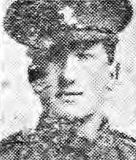
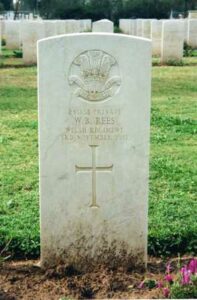
Morley Roberts, Private, 290449, Pembroke Yeomanry. Morley was the son of Samuel and Rachel Roberts, of Llwynhyraf Fach, Ammanford. He enlisted at Carmarthen into the Pembroke Yeomanry, which was attached to the 1st Mounted Division. Morley died at home of an intestinal haemorrhage on 25 July 1917, aged 23. Morley is not commemorated by the Commonwealth War Graves Commission and is not commemorated locally.
Trevor Stanley Roberts, Private, 43350, Leicestershire Regiment. Trevor was the son of William and Mary Ann Roberts, of Arfryn, Wernolau Road, Ammanford. He enlisted at Tumble into the Royal Welsh Fusiliers, but later transferred into the 11th Battalion, Leicestershire Regiment, which was the Pioneer Battalion to the 6th Division. On 10 September 1914 it landed at St Nazaire and proceeded to the Western Front, and arrived in time to reinforce the hard-pressed BEF on the Aisne, before the whole army was moved north into Flanders. Here they took part in the Action of Hooge during June, 1915, and in 1916 moved to the Somme, where the Division fought at the Battle of Flers-Courcelette, the Battle of Morval and the Battle of Le Transloy. The following year saw them at Arras, where they fought at the Battle of Hill 70, and then during the Battle of Cambrai later in the year. In the spring of 1918 the Division was one of those hit by the German Offensive on the Somme, which had been launched on 21 March 1918, and the Division took part in the Battle of St Quentin. They were moved from the line, and went to Flanders to rest, but the following month the Germans launched another offensive on the Lys, and the Division fought during the Battle of Bailleul, the First Battle of Kemmel, and the Second Battle of Kemmel. Trevor was wounded during this turbulent time, and evacuated to the Casualty Clearing Station at Vlamertinghe where he died of wounds on 8 May 1918 aged just 20. He is buried there, at Vlamertinghe New Military Cemetery, Belgium.
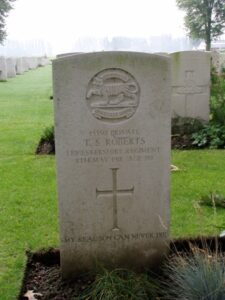
Joseph Scarsi, Sergeant, M2.100904, Royal Army Service Corps. Joseph was born at Acqui, Allesandrio, Italy on 15 October 1877, the son of Giacomo and Francesca Dacasto Scarsi. Joseph was an electrician, and left Italy for Paris on 9 February 1903, during his time there marrying Sofie Kunamme. The family were living in London by 1907, and by 1911 were residing at Ammanford, where they lived at 82, College Street, Ammanford, with their son John. Joseph enlisted at Ammanford into the Army Service Corps, and served with the 3rd Motor Ambulance. He was stationed in his native Italy, fighting on the Italian Front against the Austrian Forces, when he became ill, and died of Spanish Flu on 10 October 1918 aged 41. He is buried at Acqui New Communal Cemetery, Italy, in the family plot.
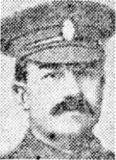
Joseph Wallis Shaw, Private, 31295, Royal Army Medical Corps. Joseph was born at Westlea, Lancs, the son of Joseph Clutton Shaw and Anne Shaw. Around the turn of the century the family moved to Devonia, Ammanford. Joseph enlisted at Ammanford on 1 September 1914 into the Royal Army Medical Corps, and landed in France on 10 July 1915 with the 46th Field Ambulance, which was attached to the 15th (Scottish) Division. Here they fought at the Battle of Loos, and in spring 1916, the Division was involved in German gas attacks near Hulluch, and in the defence of the Kink position. In July they moved to the Somme, where they took part in the Battle of Pozieres, and then fought at Battle of Flers-Courcelette, where they captured Martinpuich. In October they fought at the Battle of Le Transloy, and also in the Attacks on the Butte de Warlencourt. By May, 1917 the Division were at Arras, and fought at the First Battle of the Scarpe, and then at the Second Battle of the Scarpe, where they captured Guémappe. They then moved north to Ypres, where they took part in the Battle of Pilckem, which is when Joseph was killed in action, on 31 July 1917. He was 22 years old, and is buried at Ypres Town Cemetery Extension, Belgium.
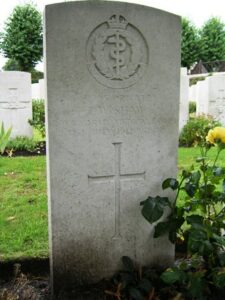
Horace Weldon Sims, Chief Writer, 877537, Mercantile Marine. Horace was the son of Harry and Helen Sims, of 66, Clarendon Road, Hoe Street, Walthamstow, London. He had married prior to the war, and was the Husband of Gladys Sims, of 10, Hoel Las, Ammanford. Horace was a Merchant Mariner, and served aboard H.M.S. Champagne, which had been requisitioned by the Admiralty for war use, and he was killed when the ship was attacked and sunk by a German Submarine off the Isle of Man on 9 October 1917. Horace was 25 years old, and is commemorated on the Plymouth Naval Memorial, Devon. Horace is not commemorated locally.
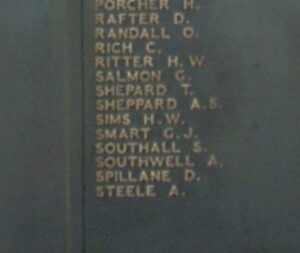
Thomas Smith, Private, 9475, Oxford and Bucks Light Infantry. Thomas was born at Fulham, and was the brother of Brother of William Smith, of 13, Coronation Terrace, Llandeilo Road, Ammanford. He enlisted at Shorncliffe into the 1st Battalion, Oxfordshire and Buckinghamshire Light Infantry, which was attached to 17 Brigade, 6th (Poona) Division of the Indian Army. The Division were stationed in Mesopotamia, and had taken part in an engagement with the invading Turkish Forces, retreating back towards the town of Kut on 3 December 1915. The Division were ordered to stay and hold the position at Kut, instead of retreating to Basra, and became trapped there. The Turkish forces besieged the town from 7 December, and for the next four months the Garrison remained, trapped inside the town. On 29 April 1916 the Garrison surrendered to the Turks, and the survivors, including Thomas, were taken Prisoner. Sadly Thomas was one of the many men captured here that died during captivity, on 30 November 1916. He was 28 years old, and has no known grave, and so is commemorated on the Basra Memorial. Thomas is not commemorated locally.
Ivor Theophilus, Private, 13842, Welsh Regiment. Ivor was the son of William and Sarah Theophilus, of 90, Forge Street, Bedwellty. His father was from Llandovery, and Ivor was residing at Ammanford at the outbreak of war, enlisting there into the 9th Battalion, Welsh Regiment. The battalion moved to France in July attached to 58 Brigade, 19th (Western) Division, and moved to positions near Loos. The Division fought during the opening attack of the Battle of Loos, and then moved to the Somme, where they took part in the second wave of the attack on Ovillers-La Boiselle on 1 July 1916, capturing the village at heavy cost, and fought through the Somme Battles of Pozieres and the Ancre in 1916. Ivor was taken ill at some time before this, and moved home for treatment, but he sadly died in hospital at Chorlton, Lancashire on 3 December 1916, age 31. He is buried at Rhymney Cemetery.
David Thomas, Sergeant, 3807, Welsh Regiment. David was the son of William and Mary Thomas, of Pantyllyn Terrace, Llandebie, and the Husband of Annie Thomas, of 5, Dynevor Terrace, Penybank, Ammanford. He enlisted at Ammanford into the 1/4th Battalion, Welsh Regiment, which was the local Territorial Battalion, attached to 159 Brigade, 53rd (Welsh) Division. The Division landed at Cape Helles, Gallipoli, on 9 August 1915, and was immediately thrown into action, spending the next few days in isolated pockets, fighting against a Turkish counter-attack during the Battle of Sari Bair, and then at the Attack on Scimitar Hill. David was killed in action the following day, on 10 August 1915, aged 32. He is commemorated on the Helles Memorial, Gallipoli.
William Ewart Thomas, Private, 94324, Kings Liverpool Regiment. William was the son of John and Annie Thomas, of Amman Stores, Ammanford. He enlisted at Llandeilo into the 9th Battalion, King’s Liverpool Regiment, attached to 172 Brigade, 57th (2nd West Lancs.) Division. The Division moved to France during February 1917, and moved to positions near Ypres, where they took part in the Second Battle of Passchendaele. In 1918 they took part in the 1918 Battle of the Scarpe, and at the Battle of Drocourt-Queant. William was killed in action near Arras on 28 August 1918, aged only 19. He has no known grave, and so is commemorated on the Vis-En-Artois Memorial, France.
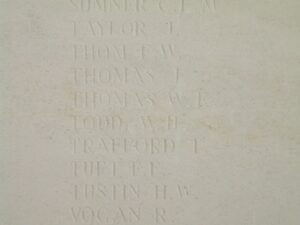
William John Thomas, Private, 12691, Royal Welsh Fusiliers. William was the son of John Thomas, of Ammanford, and the Husband of Maggie Thomas, of 32, New Road, Ammanford. He enlisted at Shotton, Flint into the 8th Battalion, Royal Welsh Fusiliers, who were attached to 40 Brigade, 13th (Western) Division. On 13 June 1915 the first transports carrying the Division left port, and moved to Alexandria, and between 6 and 16 July 1915 landed on Cape Helles and relieved the 29th Division. They left and returned to Mudros at the end of the month, and the entire Division landed at ANZAC Cove between 3 and 5 August 1915, taking part in the Battles of Sari Bair, Russell’s Top, and Hill 60, ANZAC. Soon afterwards the Division was transferred from ANZAC to Suvla Bay, and it was evacuated from Suvla on the 19th December 1915, whereupon the infantry moved after a weeks rest to the Helles bridgehead, where they faced the last Turkish attacks at Helles. On 8 January 1916, the Division was evacuated from Helles, and by 31 January was concentrated at Port Said, where they held forward posts in the Suez Canal defences. On 12 February 1916 the Division began to move to Mesopotamia, to strengthen the force being assembled for the relief of the besieged garrison at Kut al Amara. By 27 March, the Division had assembled near Sheikh Saad and came under orders of the Tigris Corps, and then took part in the attempts to relieve Kut. However, after these efforts failed and Kut fell, the British force in the theatre was built up and reorganised. William died of sickness about this time, on 11 July 1916. He was 33 years old, and is buried at Amara War Cemetery.
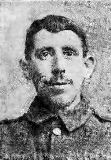
Leslie Watkins, Private, 21218, Royal Welsh Fusiliers. Leslie was the son of Albert and Eliza Watkins, of 15, Nantymelin Terrace, Coedely, Llantrisant, Cardiff. He had lived with his brother and sister at Pontyfallen, Betws prior to the war, before moving to the valleys to work at Onllwyn Colliery, Seven Sisters. Leslie enlisted in Neath into the 14th Battalion, Royal Welsh Fusiliers, which was attached to 113 Brigade, 38th (Welsh) Division. The division landed in France during the first week of December 1915, and after trench initiation, fought at Mametz Wood in July 1916, and at Pilckem Ridge in July/ August 1917. From August 1918 onwards the division took part in the Great Advance towards the Hindenburg Line, and after the German defences had been smashed, advanced past Le Cateau towards the Forest of Mormal. Leslie was killed during heavy fighting around the village of Forest, on the edge of the Forest of Mormal, on 4 November 1918, aged 21. He is buried in Forest Communal Cemetery, France.
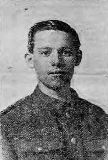
Edward Welsh, Private, 59365, Welsh Regiment. Edward was the son of Edward and Grace Welsh, of Murton Colliery, County Durham. He enlisted at Sunderland on 10 December 1915, and was posted to France on 20 May 1917, where he joined the 14th Battalion, Welsh Regiment. The battalion had been on the Western Front since December 1915 attached to 114 Brigade, 38th (Welsh) Division. The Division had famously captured Mametz Wood in July 1916, and the Pilckem Ridge on 31 July 1917. It spent several months around Armentieres, before being moved to Albert in April 1918. The war turned during the Battle of Amiens, on 8 August 1918. The Germans had now lost the upper hand, and the British regained the lost ground on the Somme after an attack which began on 21 August, with the 38th Welsh in the midst of the attack during the Battle of Albert, and then moving east, where they fought at the Battle of Bapaume. Then the move began towards the mighty Hindenburg Line, and the Division carried on with their march east, fighting at the Battle of Havrincourt, where Edward was killed in action on 14 September 1918 aged 36. He is buried at Bois Guillaume Communal Cemetery Extension, France.
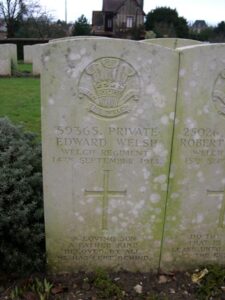
Herbert Wicks, Lance Corporal, 18694, Welsh Regiment. Herbert was the son of Daniel and Harriet Wicks, of Norwich. He had served with the Yorkshire Regiment prior to moving to Ammanford at some time before the war, and enlisted at Ammanford in October 1914 into the 9th Battalion, Welsh Regiment, which was attached to 58 Brigade, 19th (Western) Division. The battalion moved to France on 18 July 1915, and moved with the division to positions near Loos, where it took part in the opening attack of the Battle of Loos on 25 September 1915. Herbert was killed in action during the battalion’s futile assault over No Man’s Land on 25 September 1915. He was 49 years old, and is commemorated on the Loos Memorial, France. Herbert is not commemorated locally.
Arthur Williams, Private, 13021, Royal Welsh Fusiliers. Arthur was born at Llanrhug, the son of Margaret Williams. By 1911 the family had moved to 33, Heol Las, Ammanford. Arthur enlisted at Tumble into the 9th Battalion, Royal Welsh Fusiliers, attached to 58 Brigade, 19th (Western) Division. The Division assembled around Bulford during September 1914. Divisional training was completed near Tidworth, from March 1915, and the Division crossed to France during July 1915, and moved to positions near Loos. The Division fought during the opening attack of the Battle of Loos, which is where Arthur was wounded in the stomach. He was evacuated to a Military Hospital at Abbeville, but died of wounds just hours later, on 27 September 1915, aged 21. Arthur is buried at Abbeville Communal Cemetery, France.
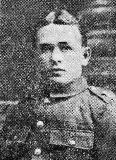
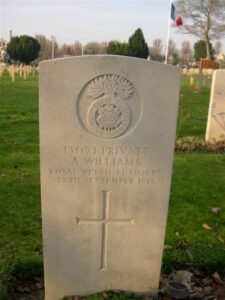
Edwin Llewelyn Williams, Private, 20729, Welsh Regiment. Edward was the son of William and Margaret Williams, of Sea View, Swansea. He married Ada Kate Morgan at Llandebie on 16 October 1904, and the couple set up home at 22, Station Road, Tirydail, Ammanford where their five children were born. Edwin enlisted at Rhyl into the 15th Battalion, Welsh Regiment, known as the Carmarthen Pals battalion, which moved to France in December 1915 attached to 114 Brigade, 38th (Welsh) Division. The Division spent its first winter in the trenches near Armentieres. In June they marched south to the Somme, where they were tasked with the capture of Mametz Wood. The attack on the wood began on 7 July 1916, but met with fierce resistance. After a change of Commanding Officer, the Division launched a fresh attack on the wood on 10 July 1916. Edward was killed in action during the Brigade’s second attack on the Wood, on 11 July 1916, aged 38. He has no known grave, and so is commemorated on the Thiepval Memorial, France.
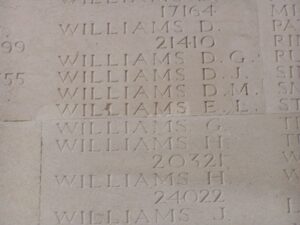
Glyn Williams, Private, 11966, Royal Welsh Fusiliers. Glyn was the son of John Henry and Elizabeth Williams, of The Square, Garnswllt, Pantyffynon. He enlisted at Ammanford into the 9th Battalion, Royal Welsh Fusiliers, attached to 58 Brigade, 19th (Western) Division. The Division assembled around Bulford during September 1914. Divisional training was completed near Tidworth, from March 1915, and the Division crossed to France during July 1915, and moved to positions near Loos. The Division fought during the opening attack of the Battle of Loos, and then moved to the Somme, where they took part in the second wave of the attack on Ovillers-La Boiselle on 1 July 1916, capturing the village at heavy cost. Glyn was killed in action during the fighting here on 3 July 1916, aged just 22. He has no known grave, and so is commemorated on the Thiepval Memorial, France.

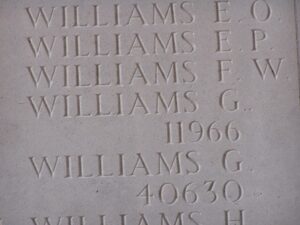
Herbert John Picton Williams, Sergeant, 13570, Royal Welsh Fusiliers. Herbert was the son of Monat Thomas Williams and Emily Williams, of 104, College Street, Ammanford. He enlisted at Llanelli into the 9th Battalion, Royal Welsh Fusiliers, who were attached to 58 Brigade, 19th (Western) Division. The Division crossed to France during July 1915, and moved to positions near Loos. The Division fought during the opening attack of the Battle of Loos, and then moved to the Somme, where they took part in the second wave of the attack on Ovillers-La Boiselle on 1 July 1916, capturing the village at heavy cost, and just two days into the offensive, Herbert was killed in action when he was shot in the head whilst giving water to a wounded man during the assault on La Boiselle on 3 July 1916, aged 30. He has no known grave, and so is commemorated on the Thiepval Memorial, France.
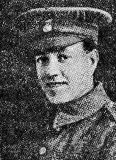
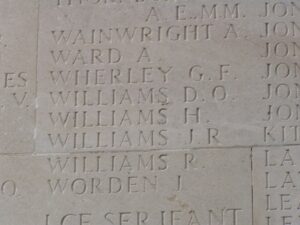
John Williams, Lance Corporal, 13194, Welsh Regiment. John was the son of John and Winifred Williams, of Fairview, Walters Road, Ammanford. He worked as a barber for Mr Higgs, at Quay Street, prior to the war. John enlisted together with his brother Wyndham at Ammanford into the 9th Battalion, Welsh Regiment soon after the outbreak of war. The battalion formed at Cardiff in September 1914, moving to Salisbury Plain to join 58 Brigade, 19th (Western) Division. During November 1914 the battalion moved to Basingstoke in billets, then in January 1915 moved to Weston-super-Mare, and in May 1915 moved with the Division to Perham Down for final training. On 18 July 1915 the 9th Welsh landed at Le Havre, and the entire Division moved to the Nursery Sector near Pont du Hem for trench initiation. On 20 August 1915 the 9th Welsh moved into the front line for the first time, for trench initiation alongside the 1st Seaforth Highlanders, and remained in the line for six days before being relieved. The battalion then moved with the Division to the Festubert sector, and on 4 September began its first tour in the Festubert trenches. With very limited trench experience, the 19th Division was thrown into the fire on 25 September 1915, when it took part in a diversionary attach near Givenchy, to attempt to draw German attention away from the main offensive at Loos, to the south. Lieutenant St. Helier Evans, of the 9th Welsh, wrote: “We immediately came under heavy fire, both rifle, machine gun and shell fire, and began to lose men freely. To our horror we saw that no one else was coming on our left, and that we were entirely on our own. We also fully realised that we were assaulting a place which had, no doubt, been strongly fortified during the night, and which had not been bombarded. We reached the Hulluch-Lens Road, having lost about 100 men. Here the enemy defending the road surrendered. We were now in the predicament of being entirely unsupported, and only about 300 strong, with a perfectly impossible place to take in front of us. Just at this moment, 11.15 a.m., we saw a marvelous sight. Line upon line of men in extended order came over the crest of the hill behind us, and advanced down the Hulluch-Lens Road, and then up towards the German line of trenches on the crest of the rise. All the Germans who had advanced to attack us, on seeing these men advance, turned round and ran as hard as they could up the hill throwing away their arms and equipment, and finally disappeared through their barbed wire and into their trench. Two of our Companies, ‘B and ‘C,’ joined up with the advance of the troops on our right.” John was mortally wounded during the attack, and died later that day, on 25 September 1915. He was 20 years old and is buried in Brown’s Road Military Cemetery, Festubert, France. His brother Reginald Wyndham Williams had been wounded in the face on 25 August, and invalided home. He subsequently returned to France, transferring to the 2nd Welsh, and was killed on the Somme almost a year later.
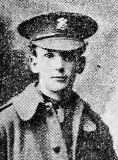
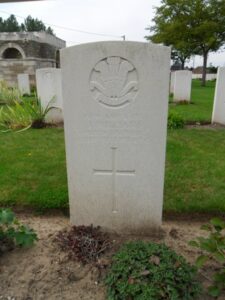
John Cloister Williams, Lance Corporal, 30559, Welsh Regiment. John was born in Ardwick, Lancashire, and was the Brother of Fred Williams, of 44, Walters Road., Ammanford. He enlisted at Neath into the 8th Battalion, Welsh Regiment, attached to 40 Brigade, 13th (Western) Division. On 13 June 1915 the Division left port, and moved to Alexandria, and from 6 July 1915 landed on Cape Helles and relieved the 29th Division. They left and returned to Mudros at the end of the month, and the entire Division landed at ANZAC Cove from 3 August 1915, taking part in the Battles of Sari Bair, Russell’s Top, and Hill 60, ANZAC. Soon afterwards the Division was transferred from ANZAC to Suvla Bay, and it was evacuated from Suvla on 19 December 1915, whereupon the infantry moved after a weeks rest to the Helles bridgehead, where they faced the last Turkish attacks at Helles. On the 8th January 1916, the Division was evacuated from Helles, and by 31 January was concentrated at Port Said, where they held forward posts in the Suez Canal defences. On 12 February 1916 the Division began to move to Mesopotamia, to strengthen the force being assembled for the relief of the besieged garrison at Kut al Amara. By the 27th March, the Division had assembled near Sheikh Saad and came under orders of the Tigris Corps, and then took part in the attempts to relieve Kut. John was killed in action during the period of the Battles of the Hanna and Fallahiyeh, on 11 April 1916, aged 23. He has no known grave, and so is commemorated on the Basra Memorial, Iraq. John is not commemorated locally.

John Dyfrig Williams, Stoker, SS/116602, Royal Navy. John was born on 27 August 1895, the son of John Havard Williams and Mary Williams, of 49, Maesquarre Road., Ammanford. He served with the Royal Navy, aboard the modern Battlecruiser H.M.S. Indefatigable, which was commissioned in February 1911 and joined the First Cruiser Squadron (renamed in 1913 as the 1st Battle Cruiser Squadron). She then joined the 2nd Battle Cruiser Squadron in the Mediterranean and at the outbreak of the Great War in 1914 took part in the pursuit of the German Warships Goeben and Breslau, and also bombarded Cape Helles during the fighting at Gallipoli. After a refit at Malta she joined the Grand Fleet and took part in the famous Battle of Jutland, where she was sunk by 11-inch shellfire from Van der Tann. Official reports state that she was hit by two shells in the X magazine, causing her to stagger out of formation, sinking by the stern. This was followed by another hit on the foredeck, causing a much larger explosion, which sank her. Of her company of 1,012, only two were picked up by the German navy, the ferocity of the explosions causing the loss of the remainder of the men. John was one of the men killed in action aboard the Indefatigable that day, on 31 May 1915. He was just 20 years old, and is commemorated on the Plymouth Naval Memorial, Devon.

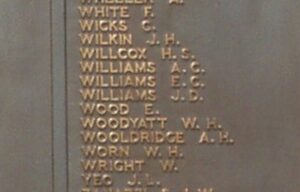
John Havard Williams, Private, S/17878, Cameron Highlanders. John was the son of William and Margaret Williams, of Ivy Cottage, 7, Pontamman Road., Ammanford. He enlisted at Cardiff into the 1st Battalion, Cameron Highlanders, who were attached to 1 Brigade, 1st Division. The Division had been one of the first to arrive in France, fighting at the Battle of Mons, and taking part in the retreat to the Marne, where the Germans were stopped. They then fought at the Aisne, and at Chivy, before being moved north to Ypres. Here they fought at the First Battle of Ypres, where they again stopped the German Offensive, before wintering in Flanders. The following year saw them in action again at the Battle of Aubers, before moving South to Loos, where they fought during the Battle of Loos. John was killed in action during the later stages of the Battle, on 13 October 1915. He has no known grave, and so is commemorated on the Loos Memorial, France.
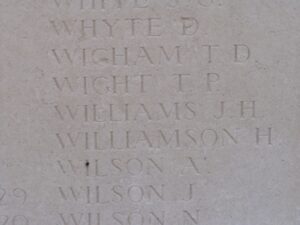
Reginald Wyndham Williams, Private, 13195, Welsh Regiment. Wyndham was the son of John and Winifred Williams, of Fairview, Walters Road, Ammanford. He enlisted at Ammanford alongside his brother John into the 9th Battalion, Welsh Regiment soon after the outbreak of war. The battalion formed at Cardiff in September 1914, moving to Salisbury Plain to join 58 Brigade, 19th (Western) Division. During November 1914 the battalion moved to Basingstoke in billets, then in January 1915 moved to Weston-super-Mare, and in May 1915 moved with the Division to Perham Down for final training. On 18 July 1915 the 9th Welsh landed at Le Havre, and the entire Division moved to the Nursery Sector near Pont du Hem for trench initiation. On 20 August 1915 the 9th Welsh moved into the front line for the first time, for trench initiation alongside the 1st Seaforth Highlanders, and remained in the line for six days before being relieved. Wyndham was wounded in the face during this spell in the line, and was invalided home for treatment. Upon his return some months later, he was posted to the 2nd Battalion, Welsh Regiment, which was attached to 3 Brigade, 1st Division. The Division had fought during the Battle of Loos, and the action at the Hohenzollern redoubt. The following year, the 1st Division was required for a major offensive, moving south to the Somme during the first week of July, and by 11 July the 2nd Welsh had taken up billets in Albert. On 15 July the 2nd Welsh left Albert and moved past Mametz Wood into the front line near Bazentin le Petit Wood, before being plunged into the terrible Somme fighting. The 1st Division saw terrible fighting over the coming weeks, its infantry battalions rotating in between the front line and reserve. On 8 September the 2nd Welsh relieved the 1st SWB in the front line at High Wood and launched another assault against the German defences there. Wyndham was posted as missing, believed killed in action during the assault of 8 September 1916, aged just 20. He has no known grave, and so is commemorated on the Thiepval Memorial, France. His Brother John was killed in 1915.

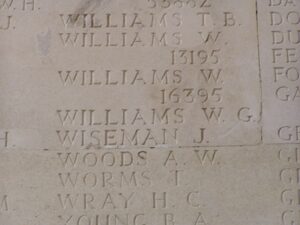
William Botting Williams, Sergeant, 11910, Royal Welsh Fusiliers. William was born in Pontlliw, the son of Thomas and Mary Ann Williams. By 1911 the family was residing at High Street, Ammanford. William was one of the first to enlist at Ammanford in August 1914, joining the 8th Battalion, Royal Welsh Fusiliers, attached to 40 Brigade, 13th (Western) Division. Prior to enlisting he had worked at Ammanford Colliery, and before that had served for a time in the Metropolitan Police Force. On 13 June 1915 the Division moved to Alexandria, and from 6 July 1915 landed on Cape Helles and relieved the 29th Division. They left and returned to Mudros at the end of the month, and the entire Division landed at ANZAC Cove from 3 August 1915, taking part in the Battle of Sari Bair. William was killed in action there on 7 August 1915, aged 21. He is buried at Shrapnel Valley Cemetery, Gallipoli.
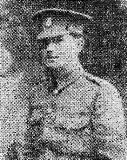
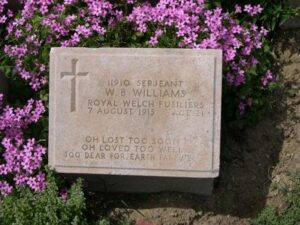
Edwin Frank Wood, Private, 67459, Cheshire Regiment. Edwin was the son of Mrs. Mary Isabella Wood, of 41, Charles Street, Neyland. He resided at 27, Mill Terrace, Pantyffynon prior to the war, where he worked as a Collier’s Assistant. Edwin enlisted at Llandeilo on 11 July 1917 into the army. On 2 April 1918 he was posted to France, and joined the 11th Battalion, Cheshire Regiment, which was attached to the 39th Division. The Division had been hit hard by the German Offensive which was launched on 21 March 1918. They were moved to Flanders to rest, but April was to see the Germans launch an attack here at the Lys, and the Division fought at the First Battle of Kemmel, and the Second Battle of Kemmel. From June 1918 onwards, the Division was not reconstituted as a fighting unit after the losses of the Spring fighting, but became a training formation for American troops arriving in France. Edwin must have been captured by the Germans during the fighting in the early part of the year, as he died in Poland on 4 November 1918, aged just 19. He is buried at Poznan Old Garrison Cemetery, Poland. Edwin is not commemorated at Ammanford.
